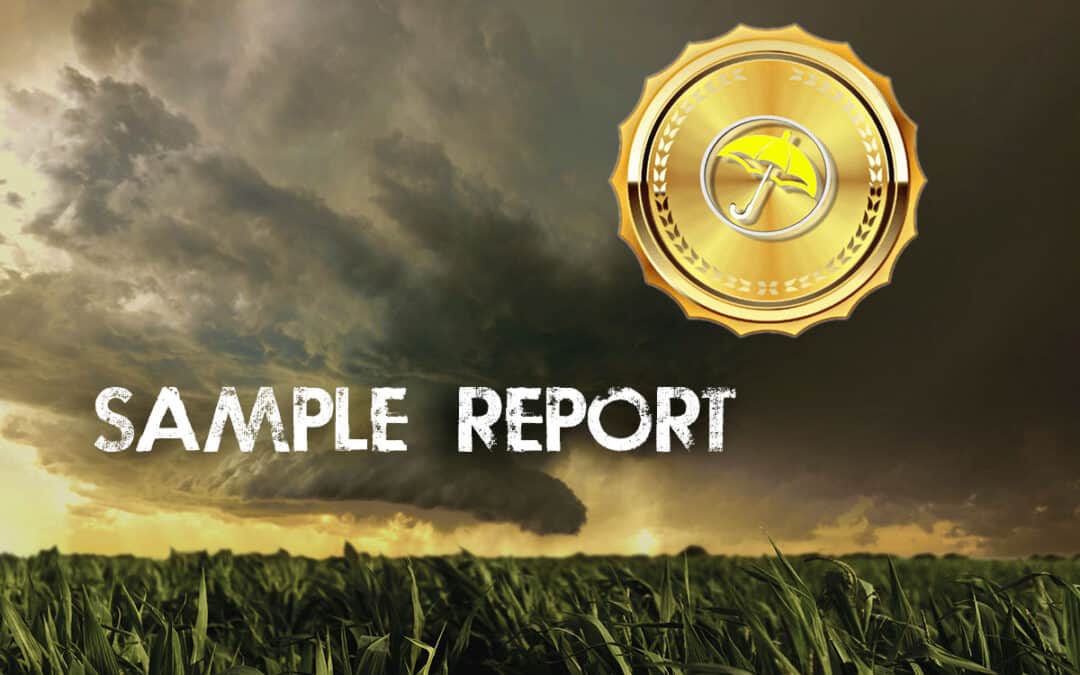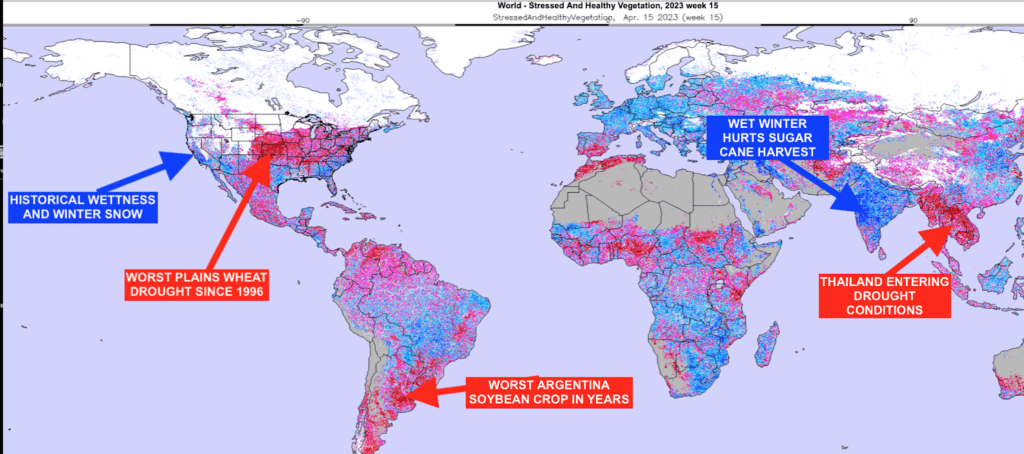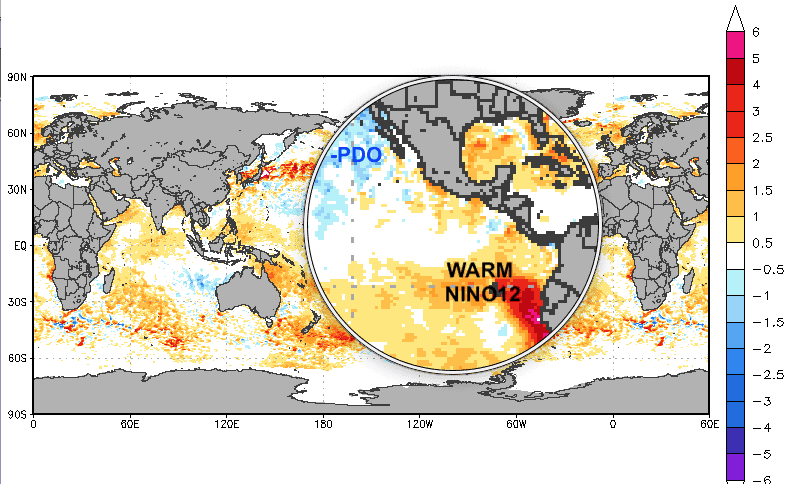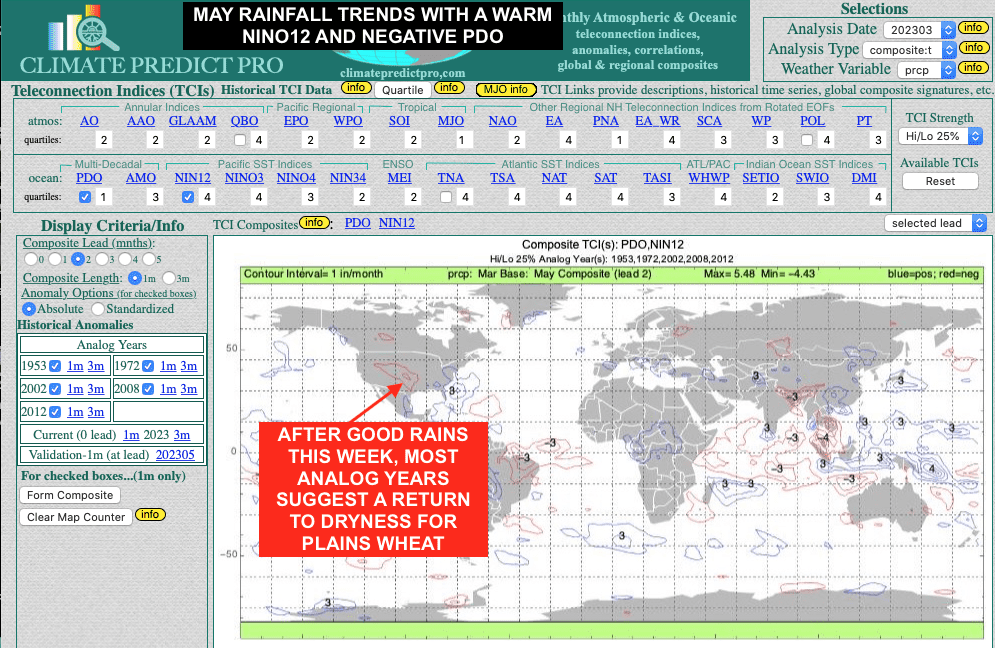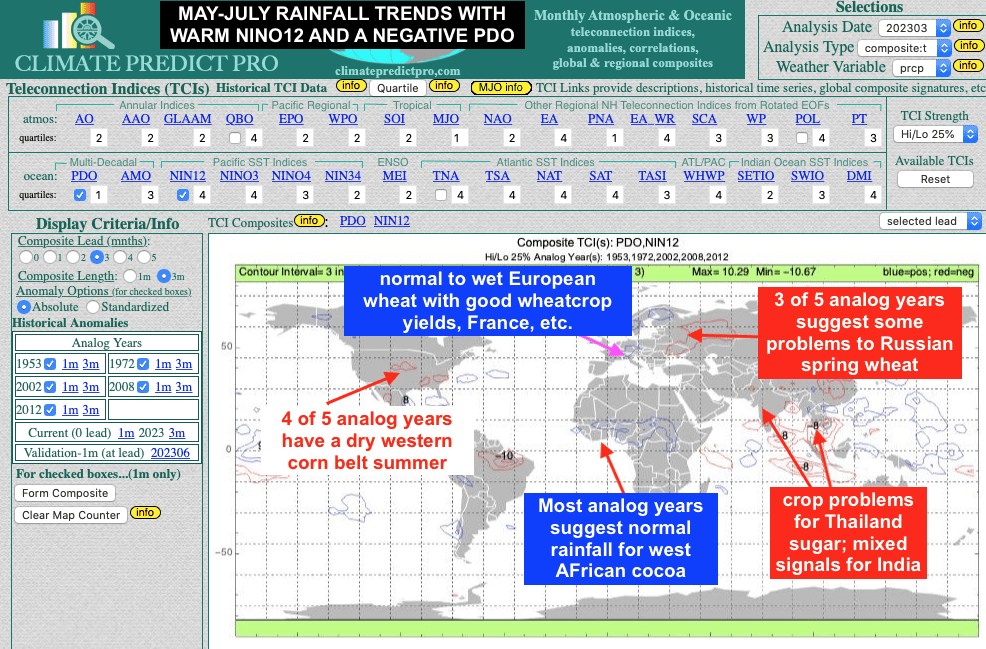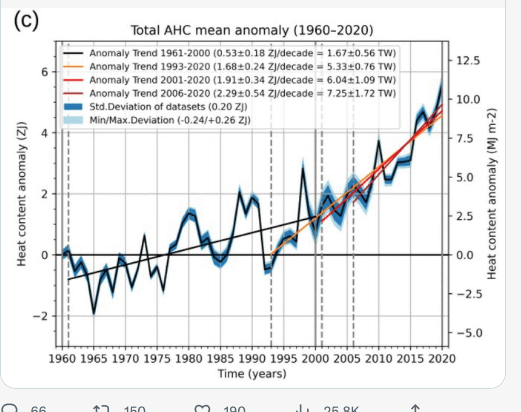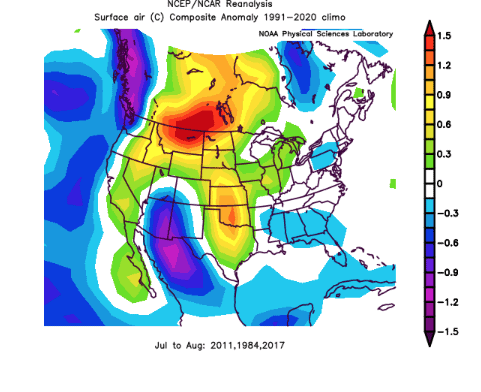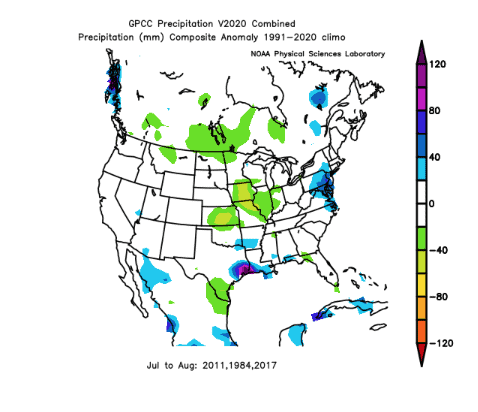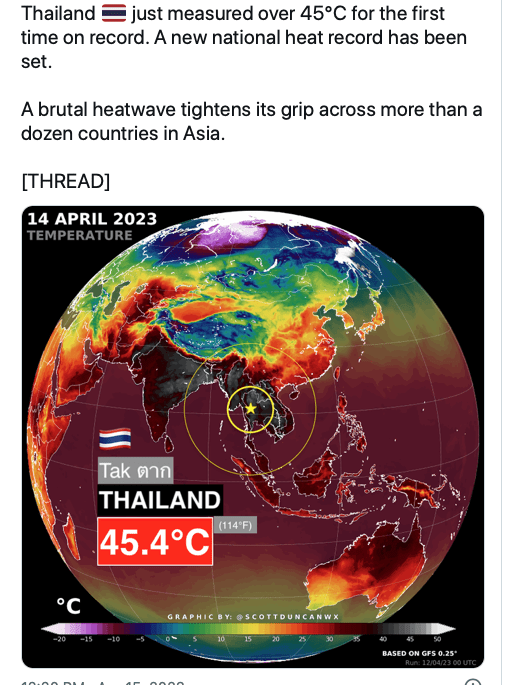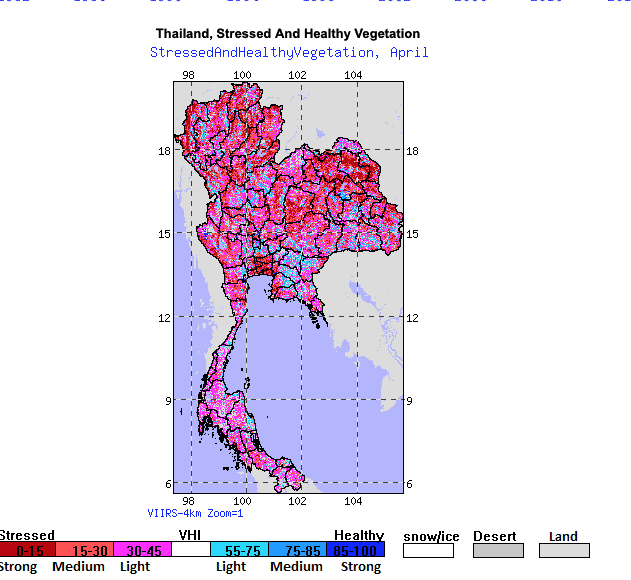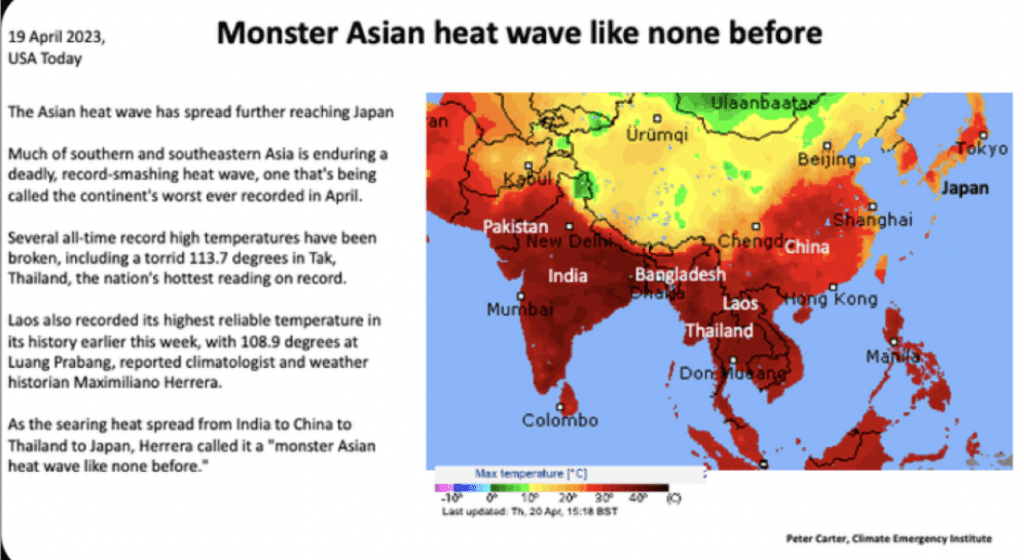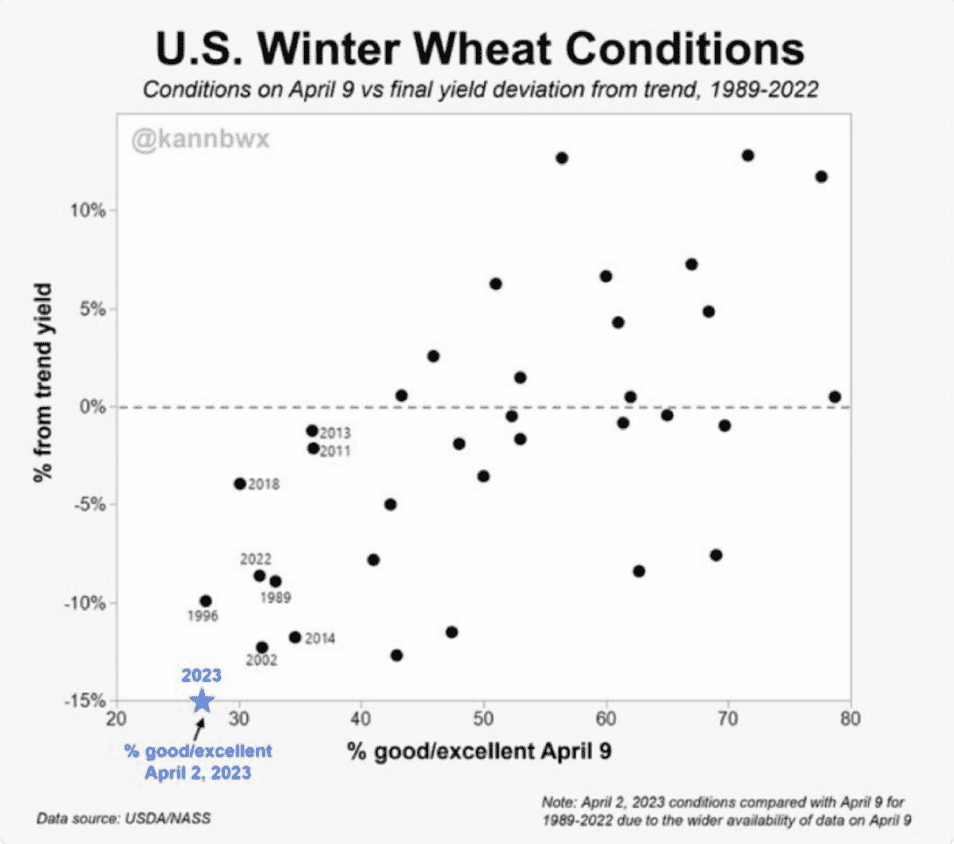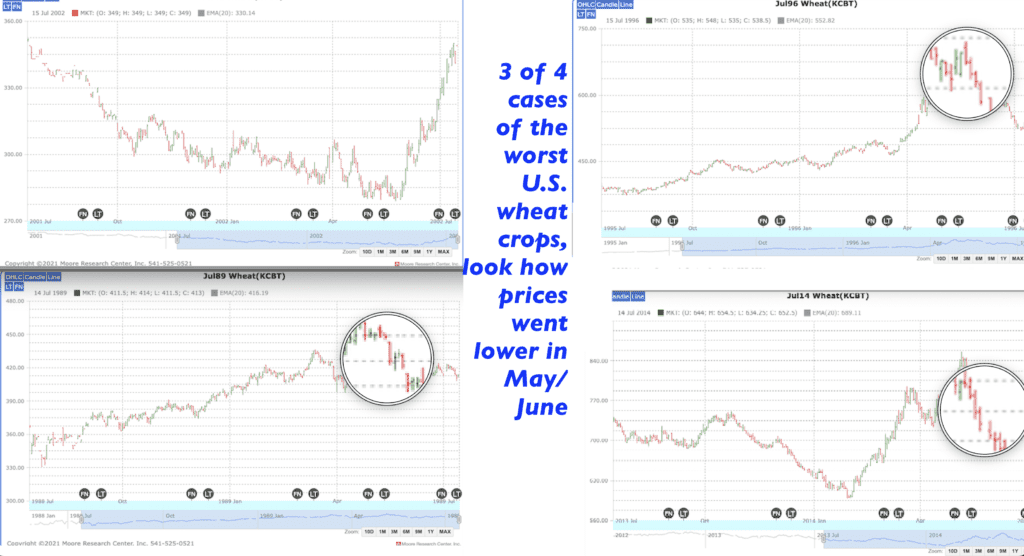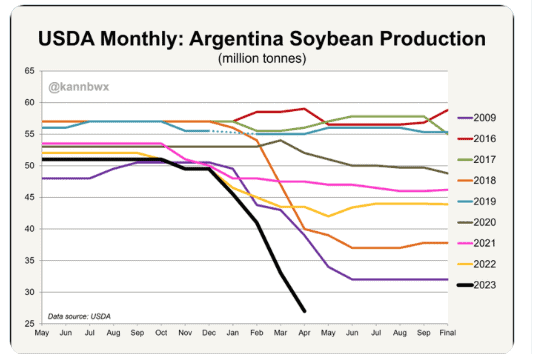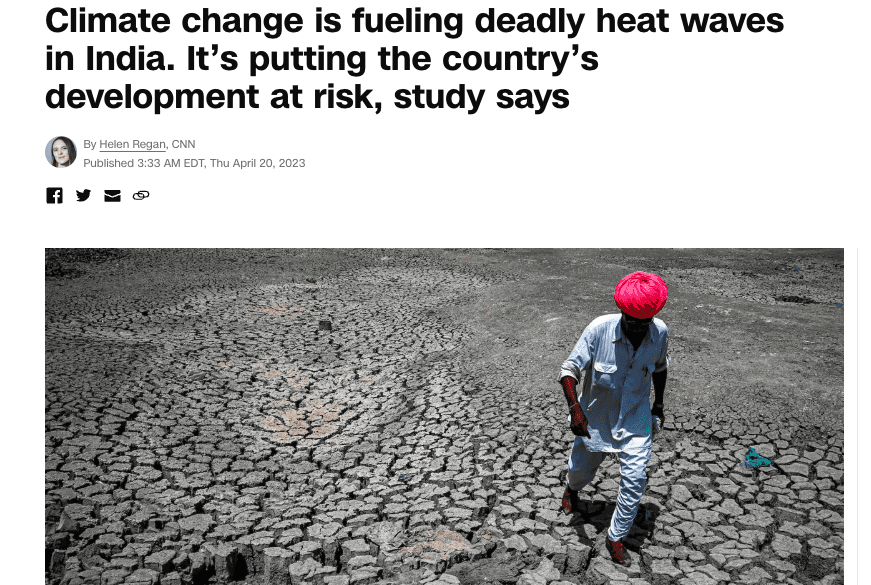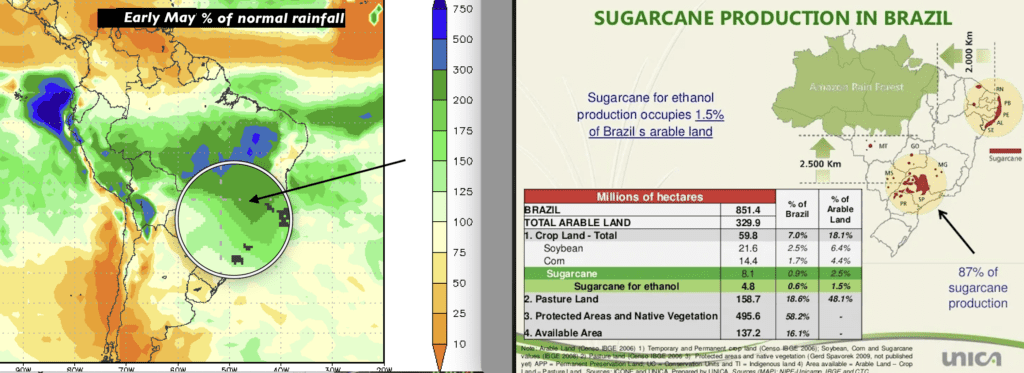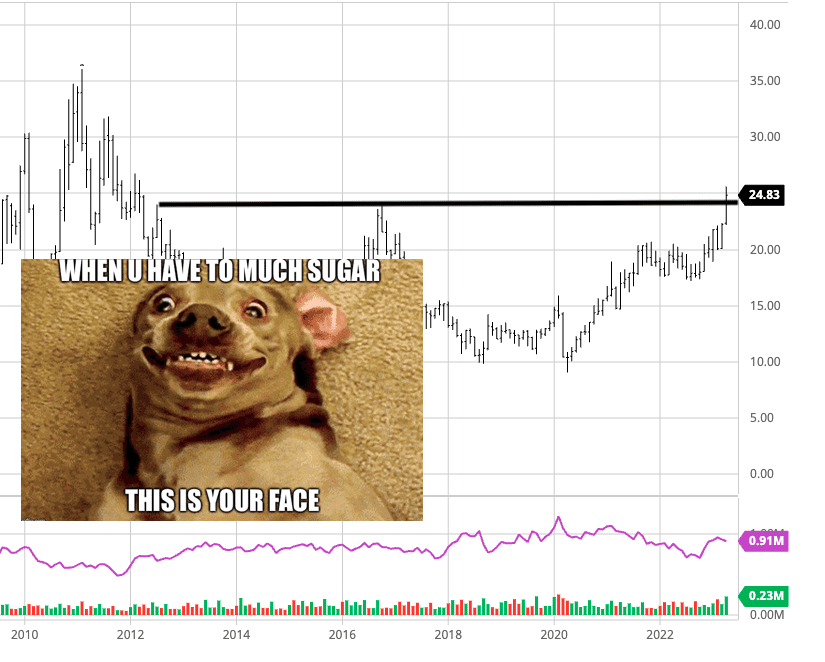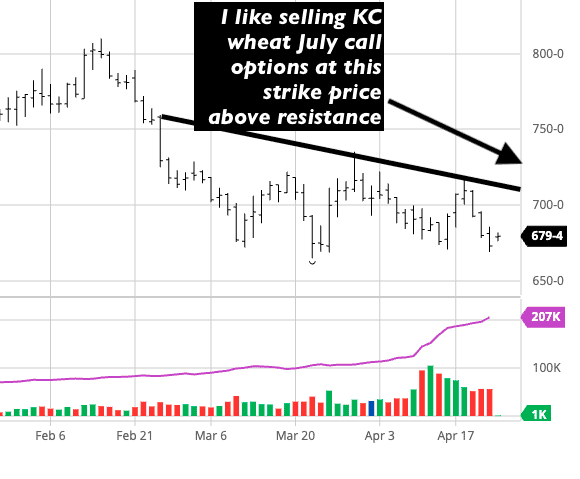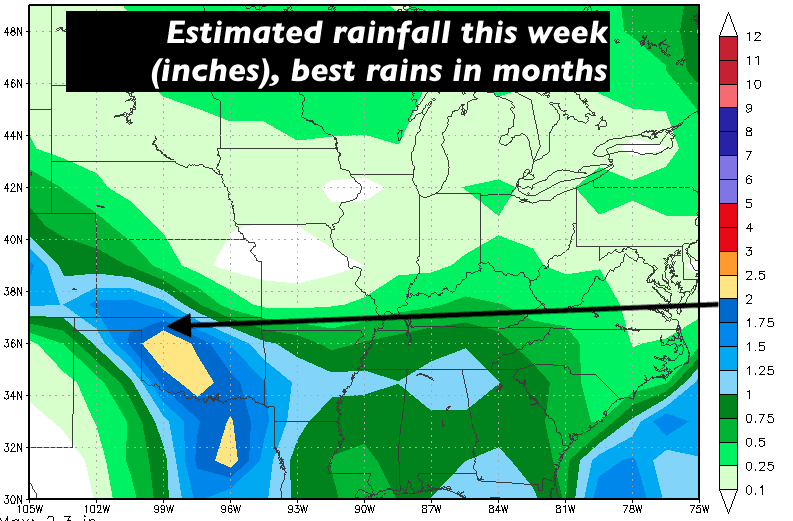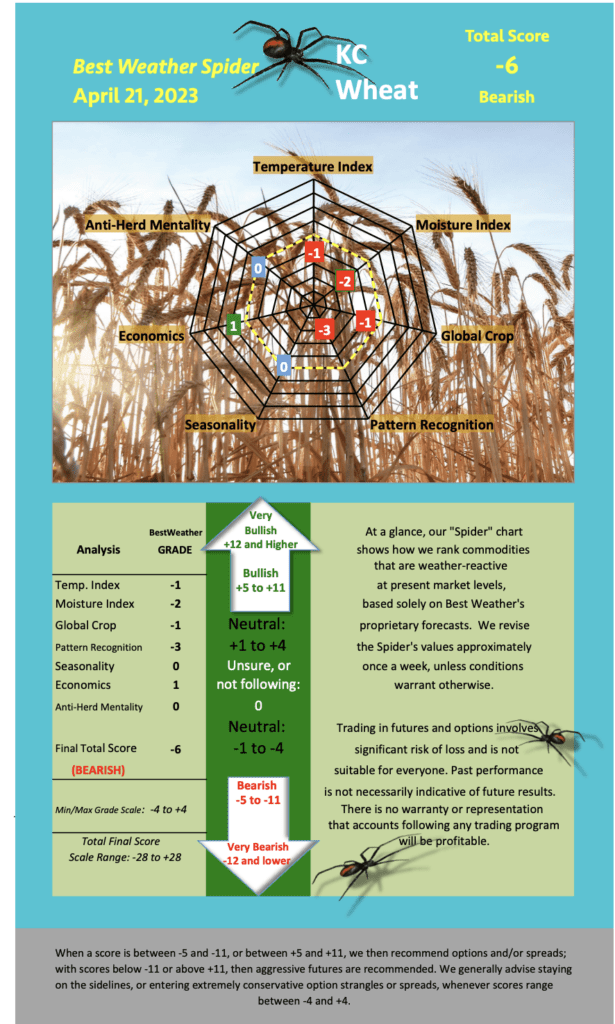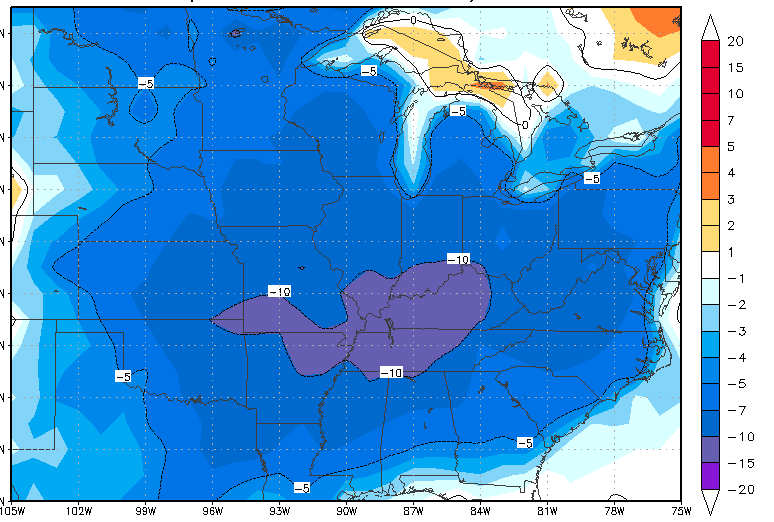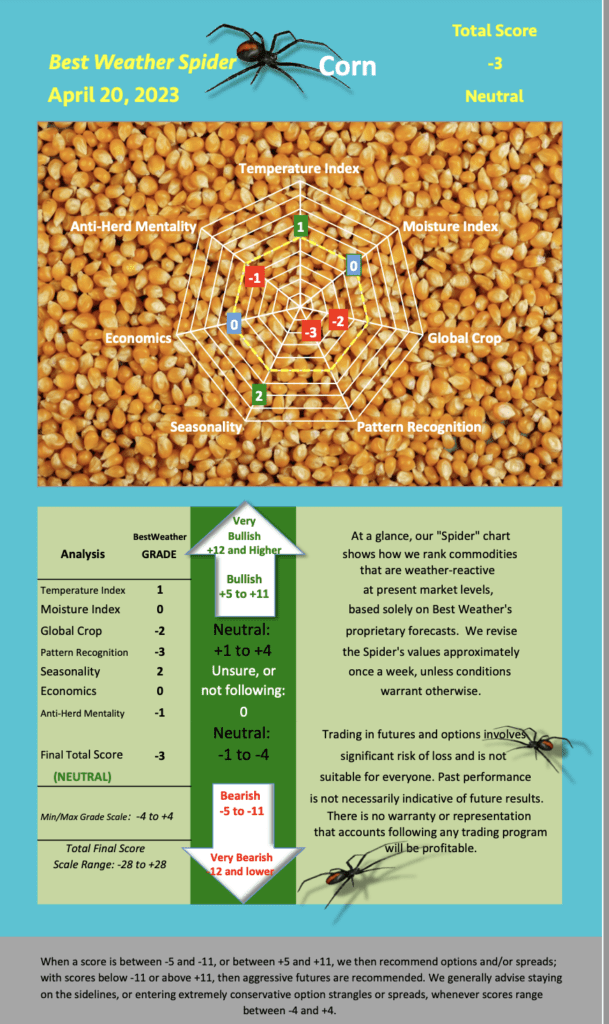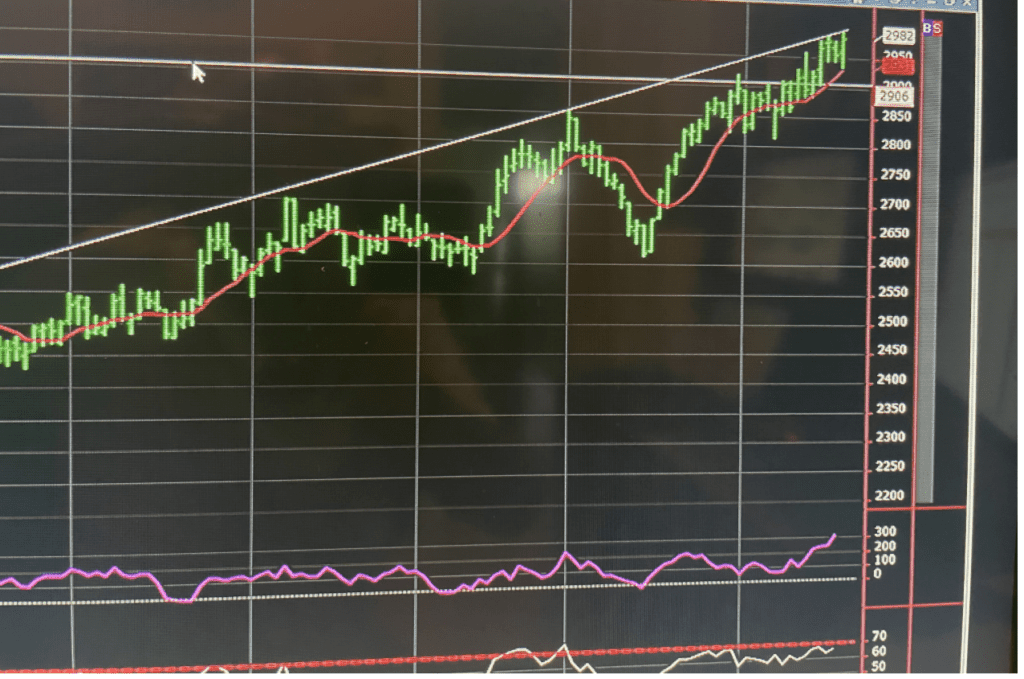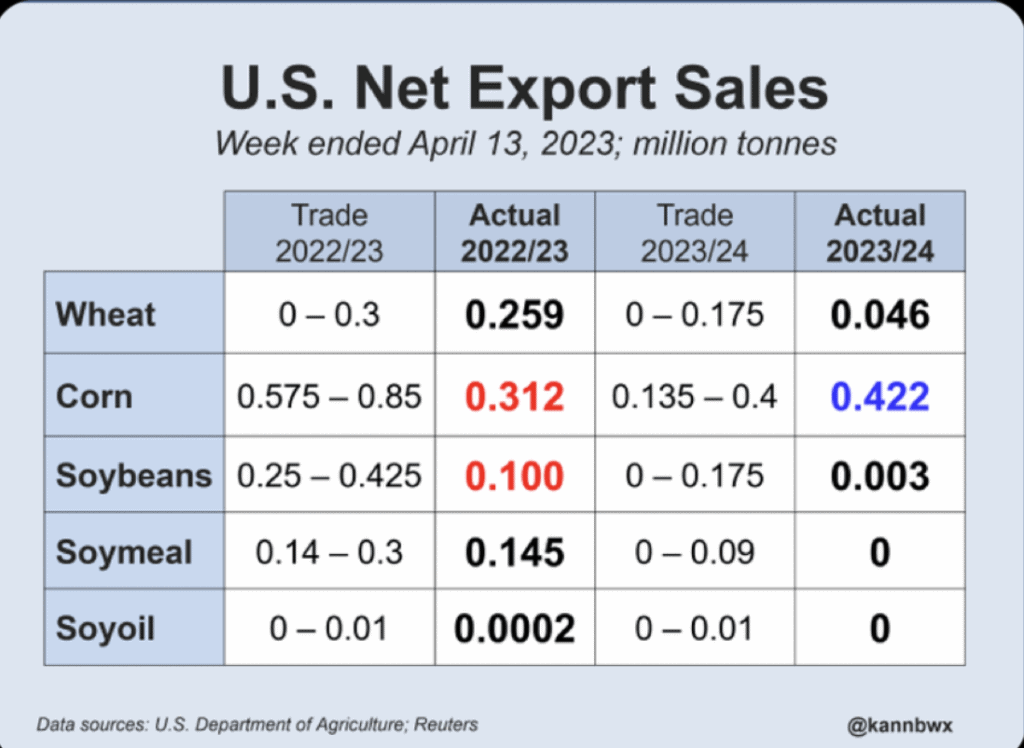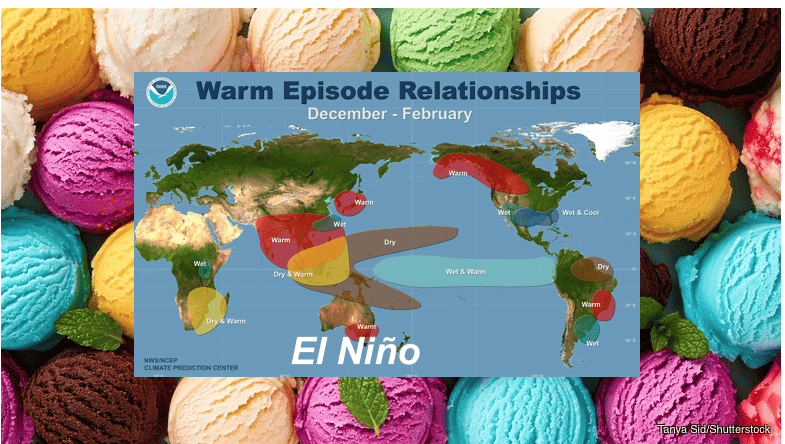
Weather Wealth Sample Content
Updated October 10, 2023
In this Report:
Introduction
State of the Atmosphere: El Niño, positive India Dipole and negative GLAAM
The MEI Index: What is it and how does it reflect El Niño or La Niña conditions?
Early clues for winter weather based on current weak-moderate El Niño trends
What happens in winter if El Niño becomes strong and GLAAM switches to positive?
If El Niño is strong while GLAAM remains negative: Impacts on other global commodities
El Niño events if the India Dipole remains positive
Midwest harvest conditions for corn and soybeans
Three problem areas for global wheat crops
The explosion in natural gas prices
Using my Weather Spider: Hypothetical play in natural gas
WeatherWealth Trade Ideas
Introduction:
This report is pretty scientific and depicts some of the weather forecasting techniques I use with respect to forecasting for global crop and energy weather, months in advance.
I discuss the least and most likely scenarios for El Niño for the next few months and how global atmospheric angular momentum and the positive Indian Dipole should play a role in the world’s weather, crops, and energy demand.
Unfortunately, there are many mixed signals with respect to whether El Niño becomes strong or not. If it does, a colder-than-normal November is likely for key natural gas regions, and one reason for the excitement in the natural gas market the last few days. However, strong El Niño events often switch to a warm December. This will create, natural gas market volatility.
With respect to South American weather, strong El Niño events generally bring good corn and soybeans crops and overall, longer-term bear markets. The situation is more mixed for coffee and potentially bullish cocoa with a strong winter Harmattan wind.
What if El Niño remains in the weak to moderate category? Global weather patterns could be more fickle and subject to change.
Today’s report is one of a series of updates I will have about El Niño’s status, which commodities may be most affected, and potentially where you can capitalize on trade ideas later this year and in 2024.
Today, I discuss the teleconnections of A) Global Atmospheric Angular Momentum (GLAAM); and B) The positive Indian Dipole (DMI) in trying to pinpoint potential El Niño analog years. One key caveat is the record temperatures of the oceans and the planet itself, brought on by what I believe is Climate Change.
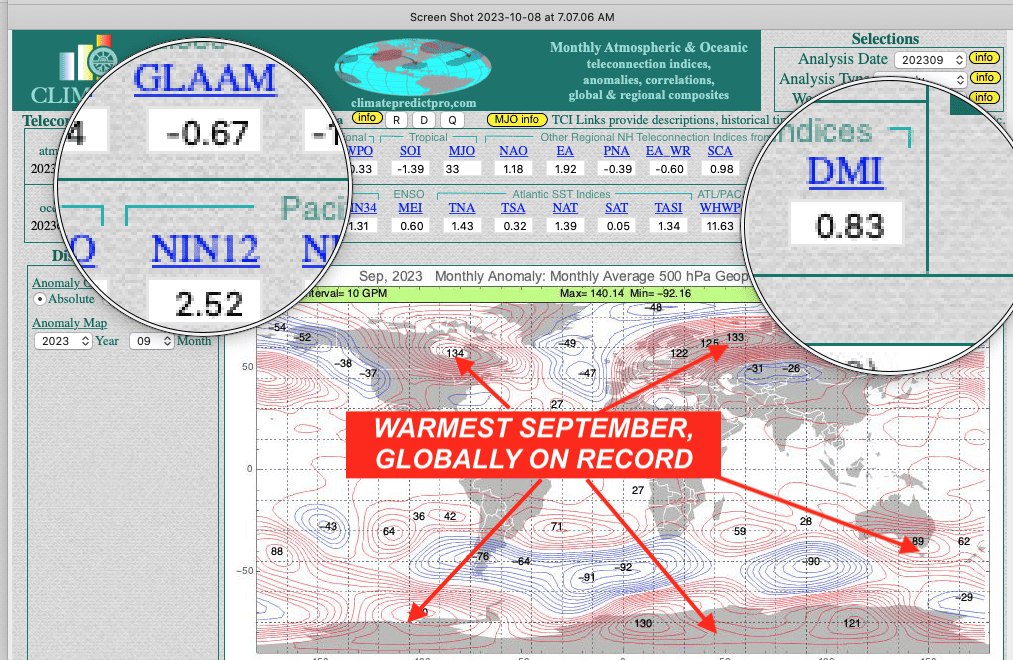
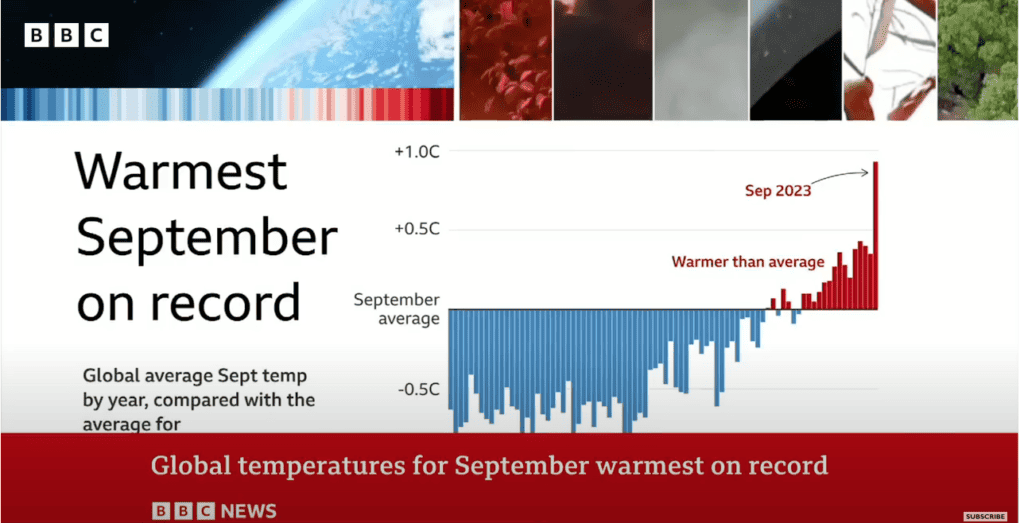
Click on the BBC video above
State of the Atmosphere: El Niño, positive India Dipole and negative GLAAM
The Earth’s atmosphere and oceans have a certain amount of natural rotation or spin, which is called angular momentum. This spin affects weather patterns.
During El Niño events, the trade winds weaken in the tropical Pacific, which normally blows from east to west. This allows the equatorial ocean currents to speed up. The faster-moving ocean currents cause an increase in the Earth’s rotation and global angular momentum. Hence, warm ocean waters move further east from near Australia to the eastern Pacific. This means GLAAM is usually positive.
Normally, GLAAM is positive when the Trade Winds reverse blowing warm waters (arrow) from west to east. So positive GLAAM is most present during roughly 75% of all El Niño events. Currently, GLAAM is negative, which means less torque or rotation along the equator. This could potentially weaken the warm waters blowing from west to east.
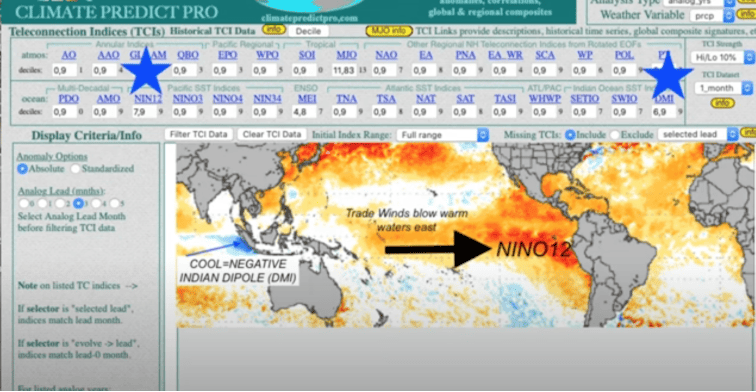
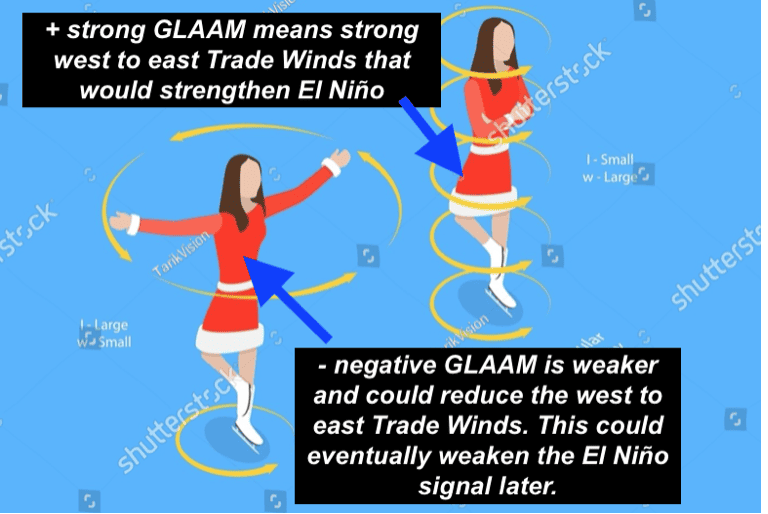
The MEI Index: What is it and how does it reflect El Niño or La Niña conditions?
A positive MEI (Multivariate ENSO Index) indicates the presence of El Niño conditions in the tropical Pacific Ocean. Specifically:
- The MEI indexes the combined signals of multiple atmospheric and oceanic components over the tropical Pacific that show El Niño/La Niña oscillations.
- A positive MEI reflects warmer sea surface temperatures, weakened trade winds, and reduced upwelling in the eastern tropical Pacific – key signs of El Niño.
- The higher the positive MEI value, the stronger the El Niño conditions. A positive MEI over 0.5 represents a moderate El Niño and above 1.0 indicates a strong El Niño.
The higher the MEI value, the stronger the El Niño. Notice the current value of 0.6 (bottom right red star), compared to some of the strongest El Niño events since 1972. This suggests that El Niño is weak currently, even though Australia has been in a drought and there have been global El Niño-type weather problems for sugar growing in India and Thailand. Some of these crop issues are due to other teleconnections such as a positive India Dipole.
The MEI index does not just factor in the record warm ocean temperatures currently, but a variety of other criteria such as GLAAM and SOI Index. (https://www.ncei.noaa.gov/access/monitoring/enso/soi)
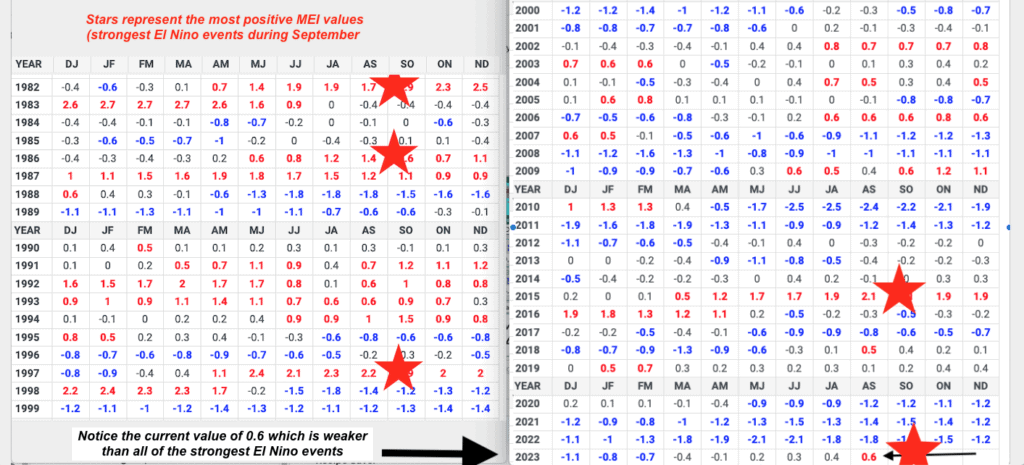
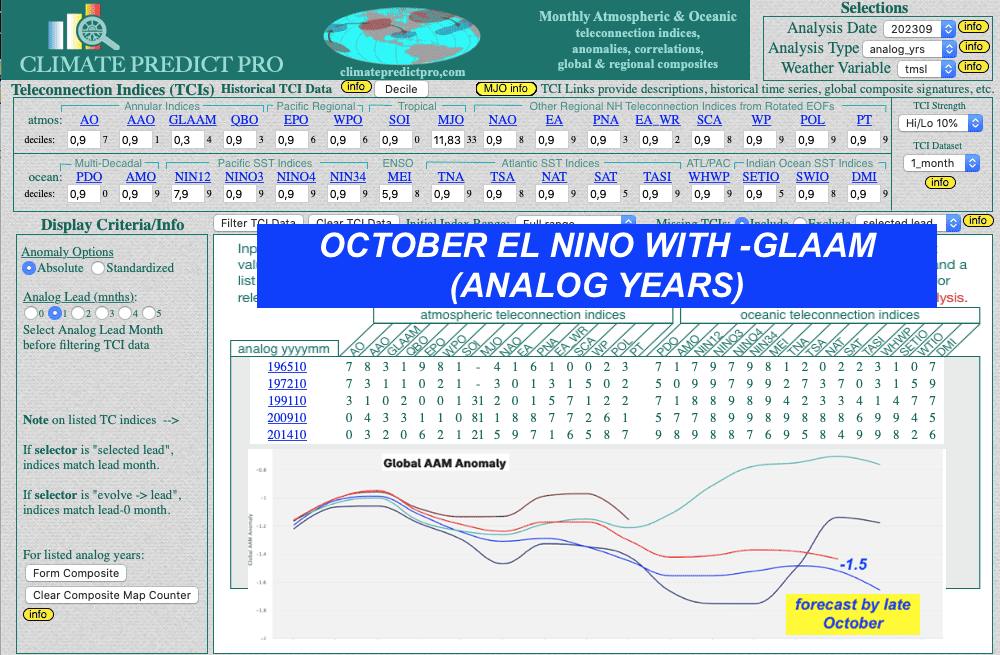
The table above (October El Niño with negative Global Atmospheric Angular Momentum (GLAAM)) depicts that negative GLAAM is quite rare with an El Niño. Since 1950, only 5 of the 17 moderate-to-strong El Niño events had negative autumn GLAAM. Only one case became a strong El Niño (winter 2014-summer 2015).
Right now, El Niño is weak, even though ocean temperatures are near record warm!
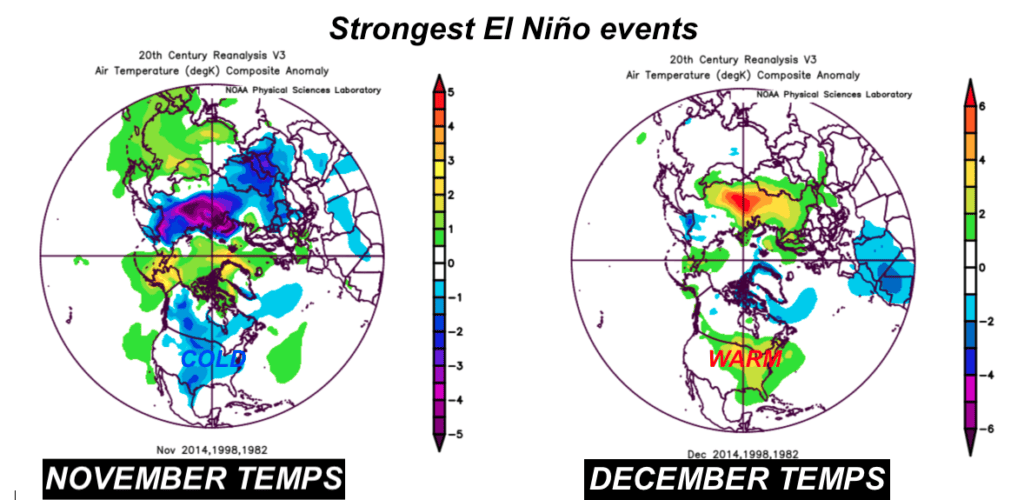
Early clues for winter weather based on current weak-moderate El Niño trends (less likely scenario)
While most of my studies suggest a colder-than-normal November for parts of the Midwest and Northeast (which should keep natural gas prices firm on breaks), this particular study is more unlikely.
However, should El Niño weaken (or fails to strengthen), a much colder winter outlook might ensue and have stronger repercussions for the energy markets.
Stay tuned
November temperature trends with 2 El Niño cases that had negative GLAAM)
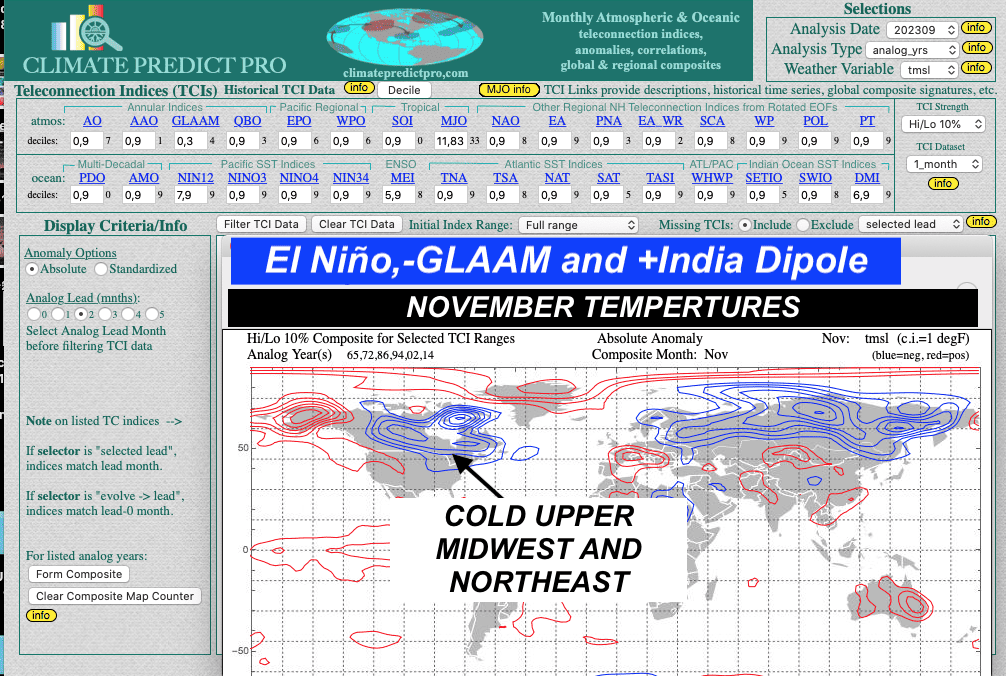
Winter temperatures if El Niño is only weak-to-moderate and GLAAM stays negative?
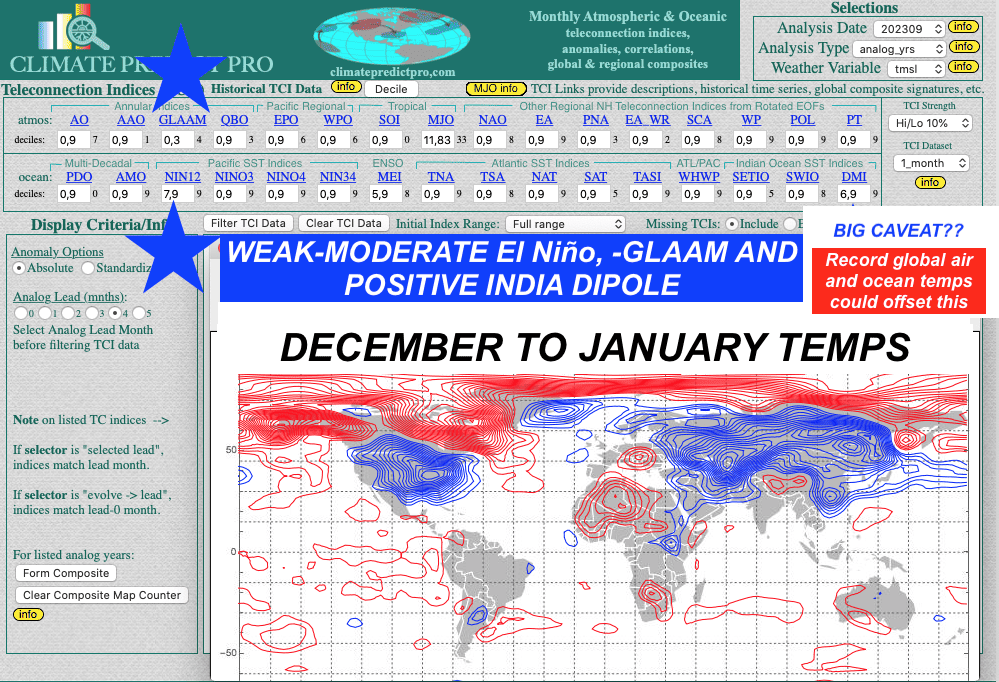
What happens in winter if El Niño becomes strong and GLAAM switches to positive? (possible scenario)
There have been close to 17 moderate to strong El Niño events, a bunch (12) of very weak El Niño that statistically did not have as much of a global effect on climate. These events were 1951-52, 1953, 1957-58, 1965-66, 1968-70, 1972-73, 1976-77, 1979-80, 1982-83, 1986-88, 1991-94, 1997-98, 2002-03, 2004-05, 2006-07, 2009-10 and 2014-16.
There is much discussion about whether the present El Niño will be extremely strong. Such as :
1982-1983: One of the strongest on record
1997-1998: The largest on record, tied with 1982-1983 1972-1973:
A moderate to strong event 2015-2016: Among the strongest recorded.
If GLAAM switches and El Niño becomes stronger this winter, it could set the stage for a warm Northern Hemisphere winter after a potentially cold November.
This would offer potential bearish “spreading opportunities” in heating oil vs. either crude oil or gasoline. It would also mean that whatever bull market might exist into the late fall in natural gas prices would offer a selling opportunity, later.
If El Niño is strong while GLAAM remains negative: Impacts on other global commodities (likely scenario)
It is very difficult to predict if GLAAM will stay negative. If it does, below are the most likely scenarios for global commodities in the next few months.
If El Niño becomes strong and we have a continuation of a positive Indian Dipole and negative GLAAM, then the 2014-2015 analog could be a good forecasting tool.
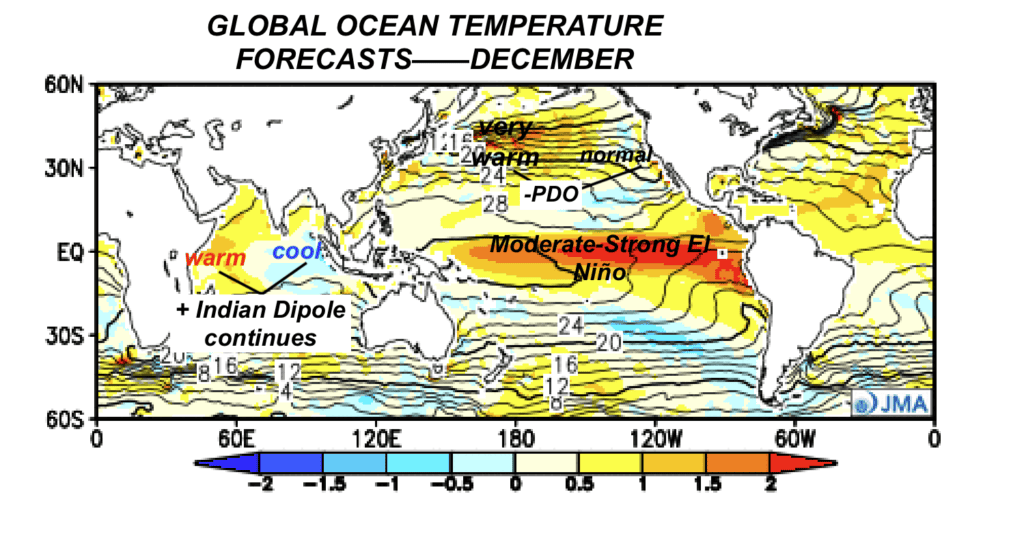
The only moderate-strong El Niño that had negative GLAAM and positive India Dipole all winter (Southern Hemisphere summer) was the infamous 2014-2015:
1) A volatile early winter for the natural gas market (A cold November and warm December)
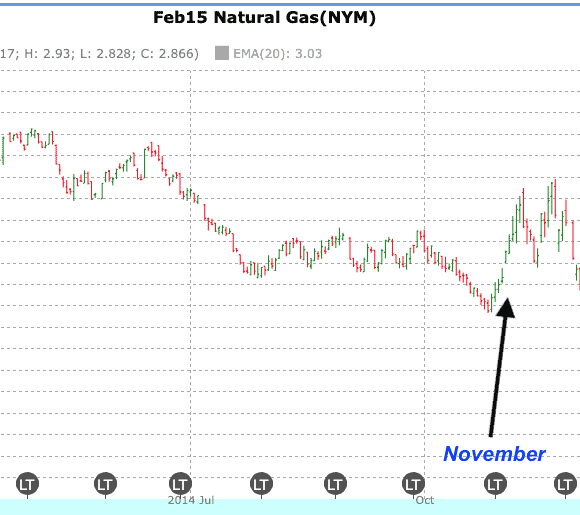
2) After a steep autumn sell-off in cocoa futures, a strong, dry Harmattan Wind helped prices rally during the winter. I remain bullish on cocoa longer-term.
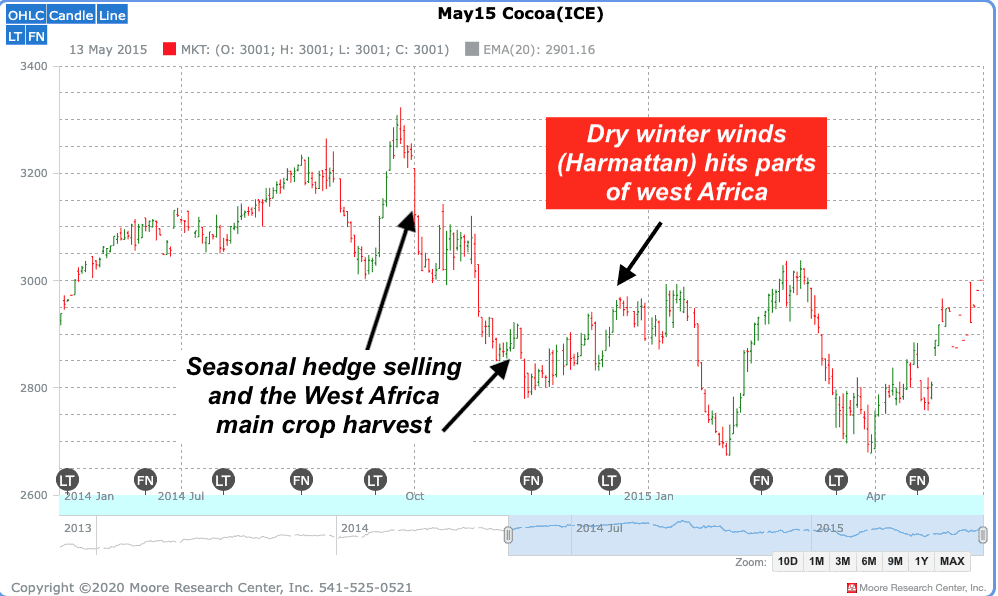
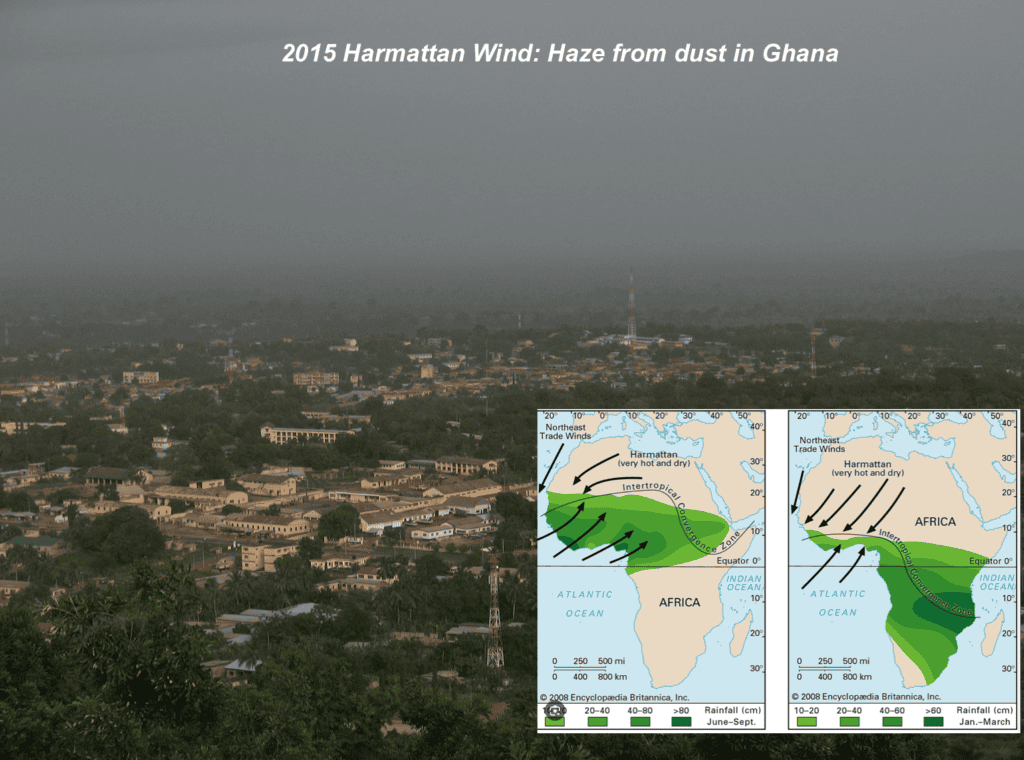
This wind (or not), will be critical for movement in the cocoa market between December-February. Without it, the West African cocoa crop could recover from recent crop problems.
3) Following a dry second half of October for Brazil’s coffee, improved rainfall through January 2015 created a bear market for prices.
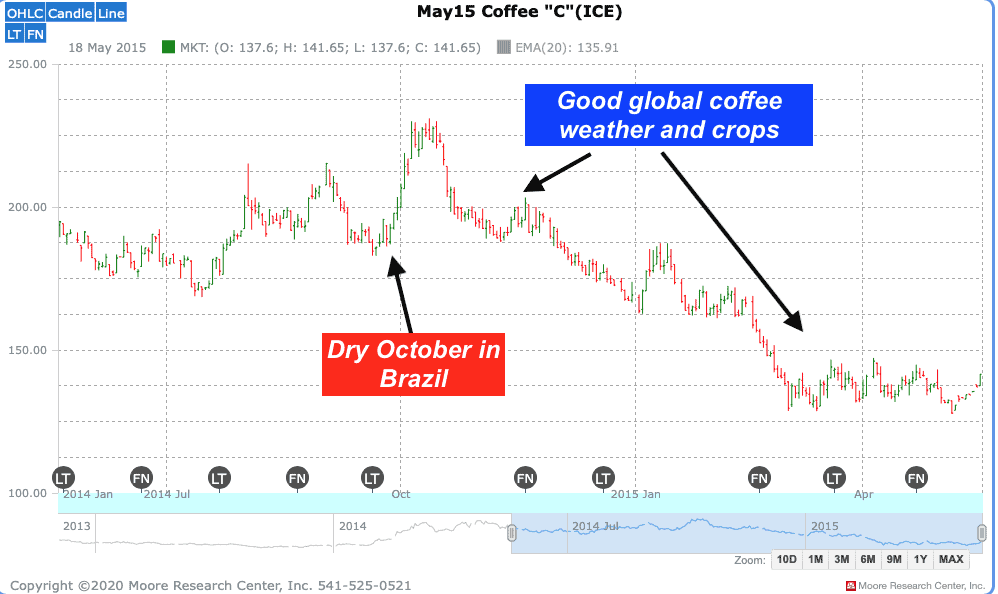
4) Higher late autumn prices for corn and soybeans followed by neutral winter price action and a longer-term bear market in corn and soybeans with decent 2015 South America and Midwest crops.

5) Some autumn crop problems (Southern Hemispheric summer) for wheat in Australia and Argentina. (This is indeed happening today).
Seasonally higher wheat prices through November, followed by a rebound in global wheat crops in 2015 and a major bear market.
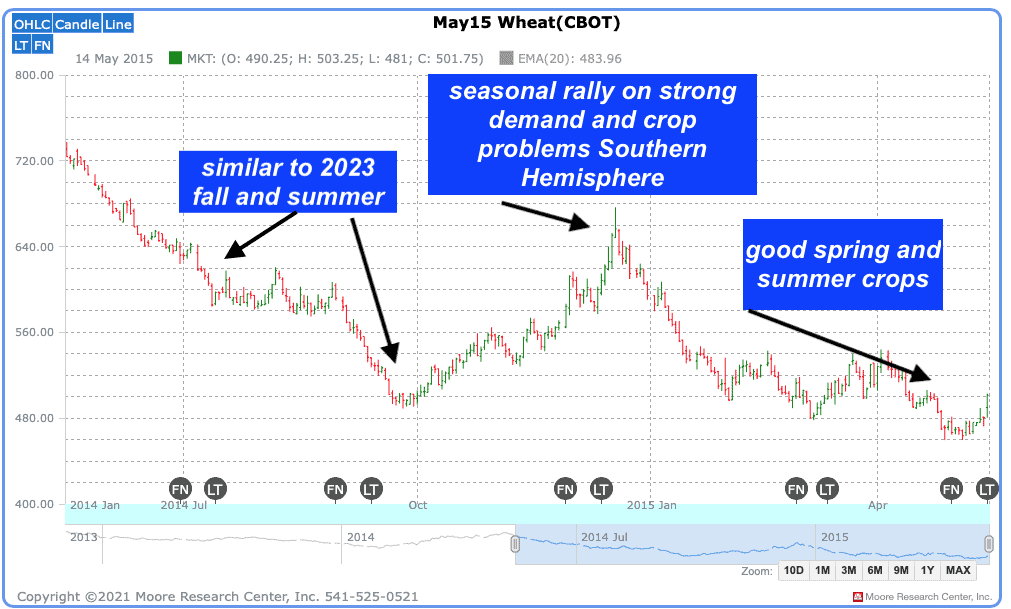
El Niño events if the India Dipole remains positive (likely scenario)
For now, here are the most likely scenarios for El Niño events that had a positive Indian Dipole.
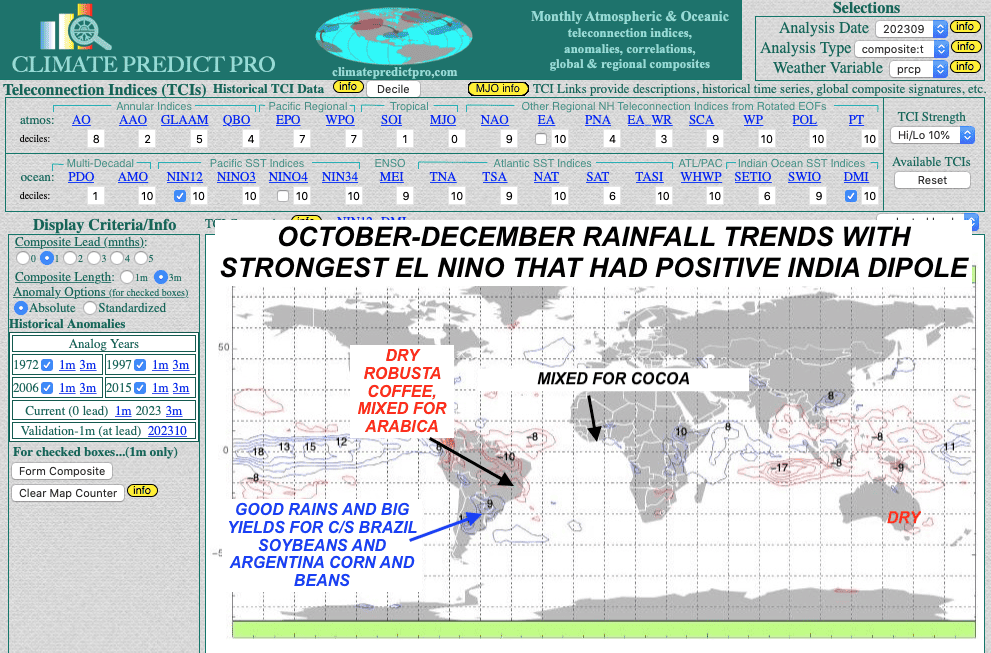
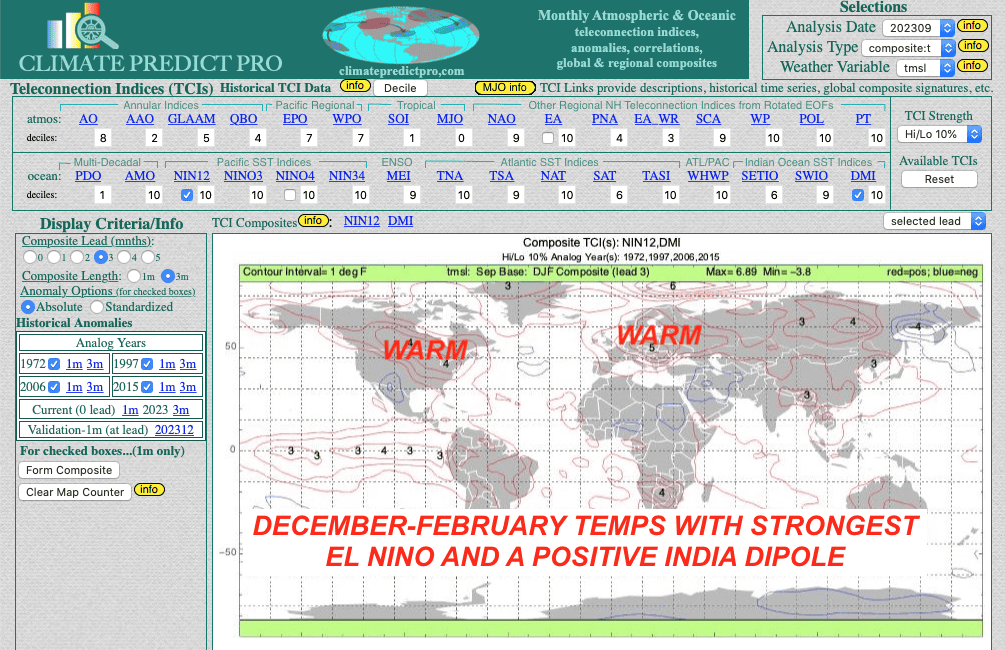
CONCLUSION:
The most likely scenario is for El Niño to become stronger as negative GLAAM becomes more positive and winds blow more warm waters from west to east across the Pacific. The Indian Dipole should also remain positive. This sets the stage for one of these analog years shown just above. It would result in: A) Bearish longer-term implications for corn and soybeans; B) A volatile winter weather market for natural gas with a cold November and warm December; C) Potential longer-term bullish implications for cocoa, but bearish coffee.
If El Niño remains mostly weak and GLAAM stays negative, this would have different implications for some commodities. There was only one El Niño in history that was strong during the winter in the Northern Hemisphere when GLAAM remained negative (2014-2015), which was a super El Niño.
Midwest harvest conditions for corn and soybeans
Over the last five weeks, I have been mostly in the bearish camp in soybeans suggesting around the September 11th USDA report, that seasonally, grains go lower into harvest and the drought talk last summer was already built into prices.
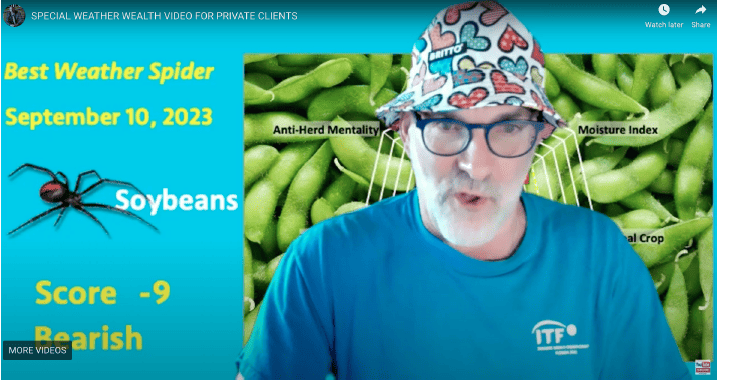
However, as you can see, my BestWeather Spider went from a very bearish (-9) on September 10th, to more neutral to slightly bearish a couple of weeks ago (-3). This is only because of the uncertainty of future USDA reports and seasonal factors that usually turn more bullish corn and soybeans, deeper in the autumn.
Longer-term, I remain bearish on El Niño and potential big South American crops this winter (their summer) and probably good Midwest yields in 2024.
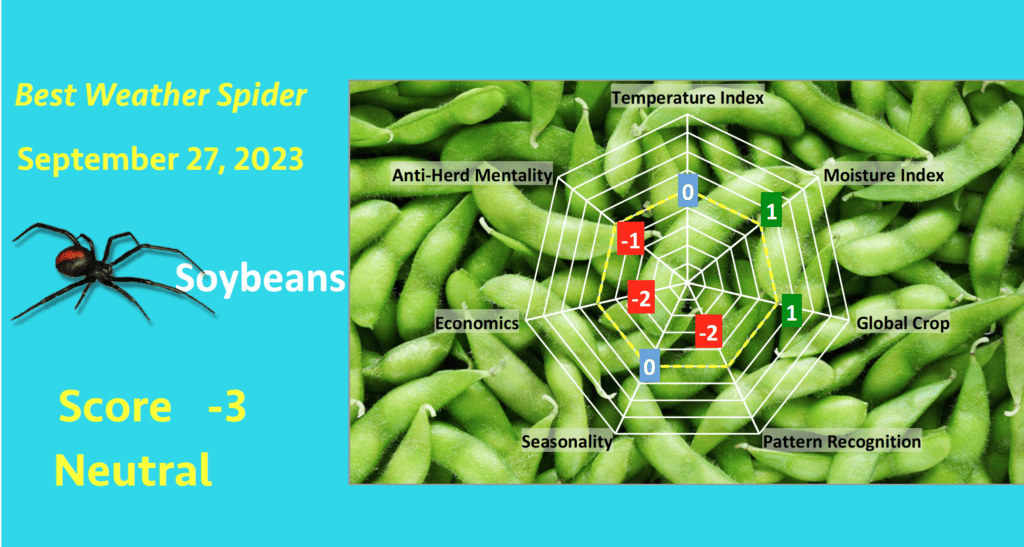
Usually given the teleconnections I discussed in detail in my report above, drier than normal is the rule for the Midwest corn and soybean harvest deeper in October and November.
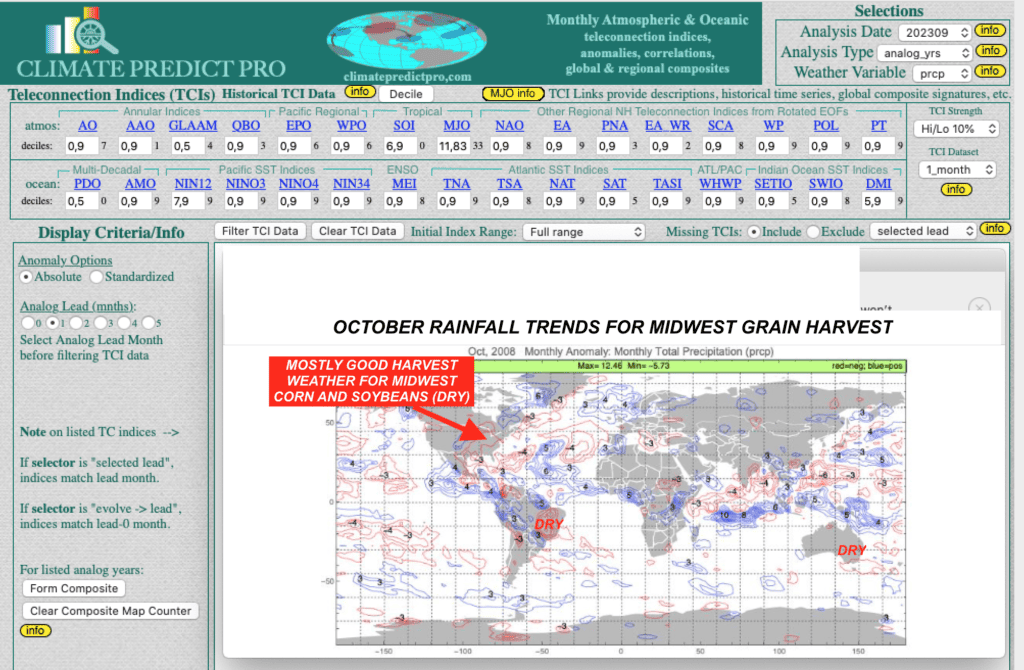
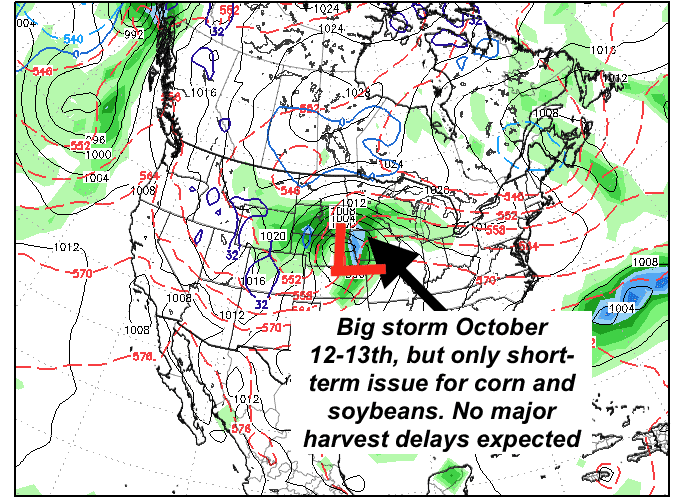
Three problem areas for global wheat crops
While Russia raised their 2023 crop estimates and poor global demand and the stronger dollar have created a major spiral down in wheat prices, here are the main current crop problem areas:
A) Australia’s wheat crop will continue to be downgraded due to El Niño and the positive Indian Dipole.
B) Argentina’s drought threatens at least 35% of their wheat crop, which was planted last April. Usually, during an El Niño, Argentina receives decent spring rains. Hence, the fact there has been a drought might suggest that El Niño will not be as strong as many others feel.
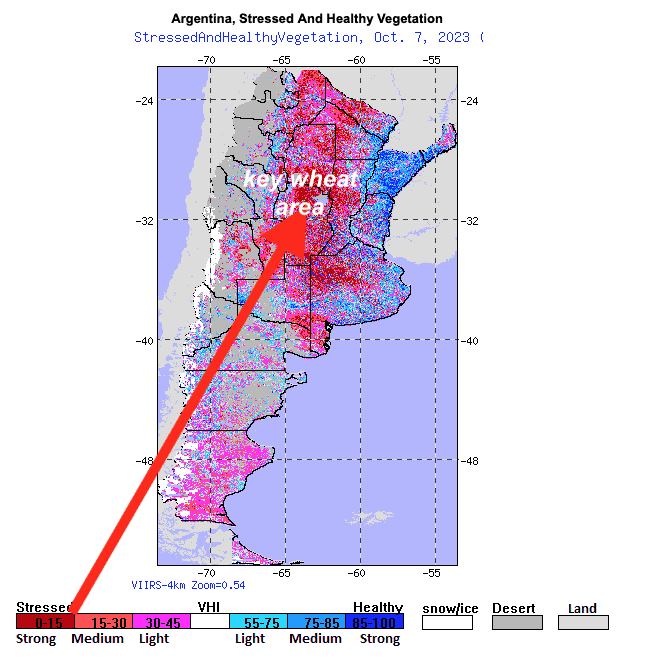
C) Heat and dryness in Europe and Ukraine may begin to cause some market concern due to planting issues.
However, my longer-term research shows only moderate correlations between El Niño and wheat yields in Eastern Europe and Ukraine. Other climate drivers are often more relevant.
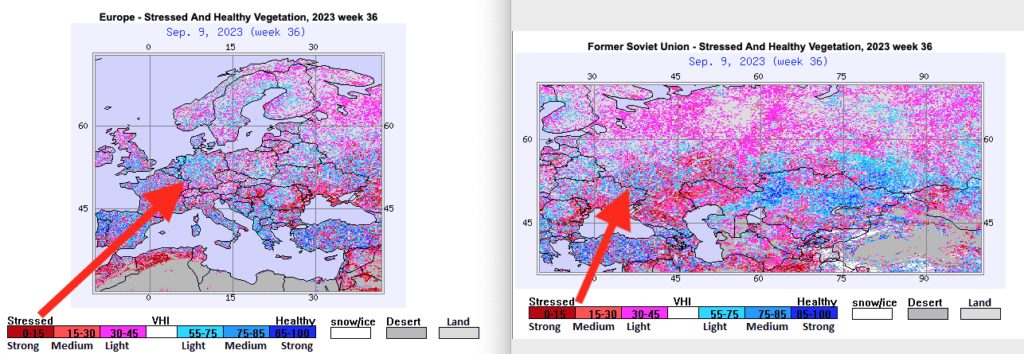
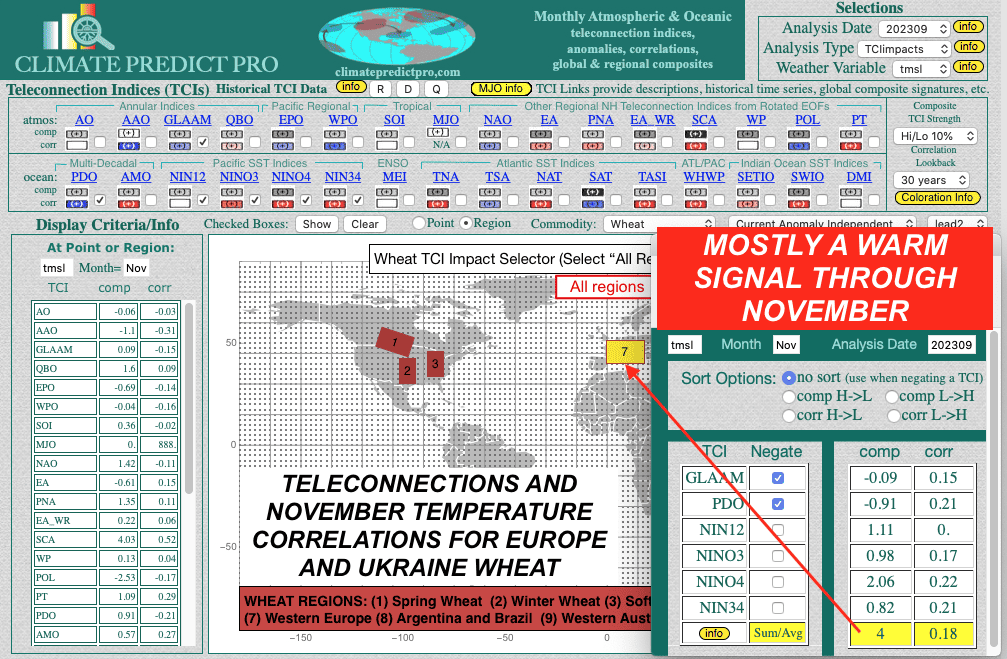
My in-house long-range weather software has multiple tools. This particular “climate impact” feature illustrates the most important teleconnections in red and blue.
Without confusing everyone, the majority of El Niño indices, along with a negative PDO and negative GLAAM, suggest warm weather lasting into dormancy for Ukraine and European wheat. However, European rainfall correlations are not significant with El Niño.
The explosion in natural gas prices
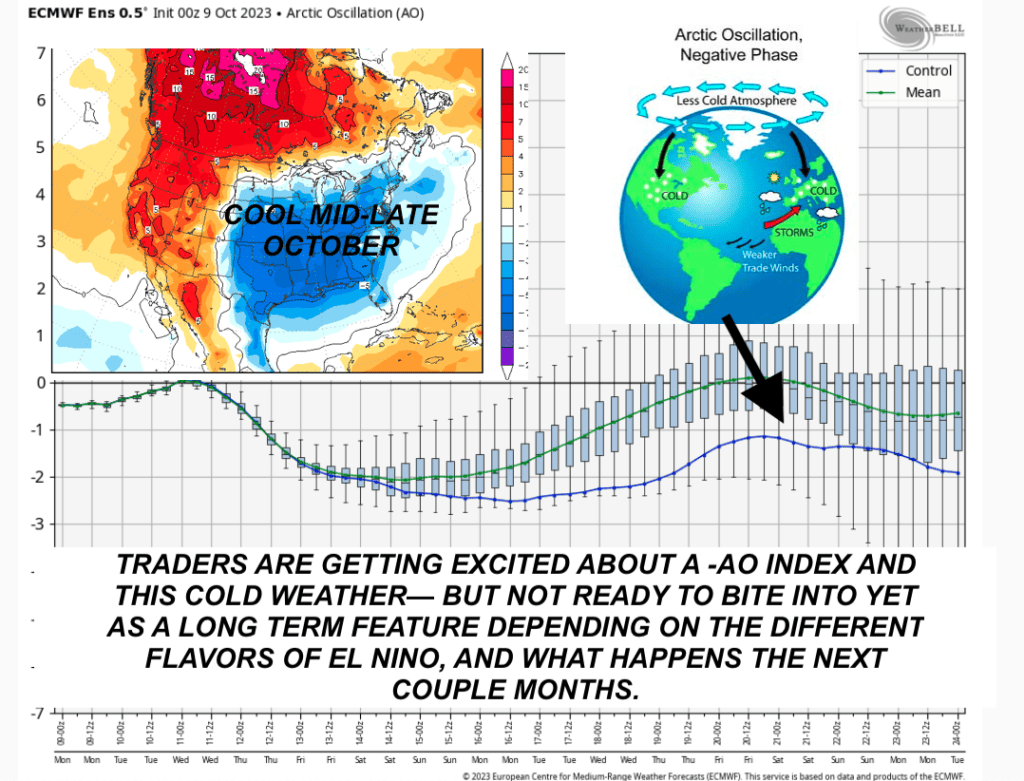
Natural gas markets face rising tensions due to a blend of factors, including diminished U.S. output, increased exports, and expectations of higher heating demand. Labor disputes at key LNG facilities in Australia raise concerns about global supply disruptions and are also affecting U.S. prices.
Meanwhile, a decline in operational rigs by U.S. energy firms suggests a tightening domestic supply, adding complexity to market dynamics.
I have not been focusing on this market much, and while I did not predict this move, only a small part of it was weather-related. Historically, cold October weather tends to result in “pre-winter” hedge fund buying on the “psychology” of a cold winter.
Again, if El Niño remains weak to negative, the India Dipole positive and negative GLAAM, it is possible that winter could be quite cold in the U.S. Nevertheless, because of the warming arctic and record global oceans and planet, I am reluctant to call for a major, severe cold winter yet.
Stay tuned, there will hopefully be plenty of trading opportunities this winter in the energy markets.
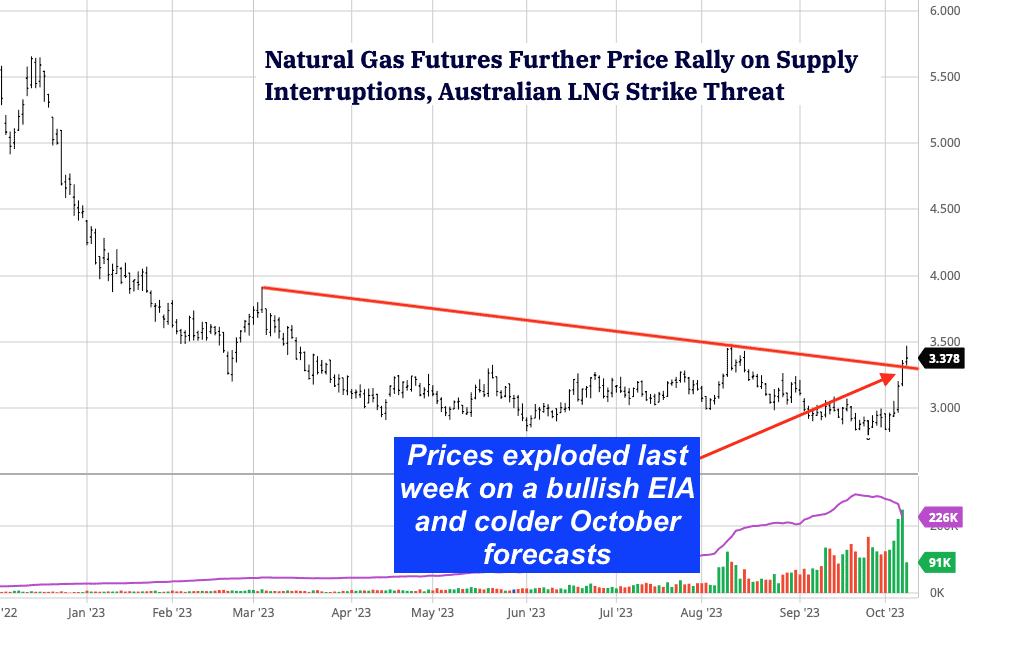
Using my Weather Spider: Hypothetical play in natural gas
I have not updated most of my Weather Spiders for the last few weeks, but plan to post a few, either by this Friday or by October 18th.
One can see that, for the most part, up through October 9th, the Spider was really in the neutral camp. Each scale goes from very bullish (+4) to very bearish (-4). It is rare the total score exceeds +10 or -10.
I certainly did not recommend buying natural gas yet, so take this with a grain of salt. But one will notice that when there was a bullish EIA last Thursday on the lower rig counts and natural gas prices began taking out resistance, the pattern recognition score would become bullish (+3), from bearish. In addition, as maps trended colder for the eastern half of the country into November, the temperature index went from very slightly bullish (+1) to (+2).
The lower rig counts and higher crude oil prices again increased the Spider’s economic score to (+3).
Bottom line? This is just a gauge of how I track some markets. While a bit late now to jump into the natural gas market until I do more winter weather research, this gives you an idea of how I use weather, other fundamentals, and technical analysis to make some trade recommendations.

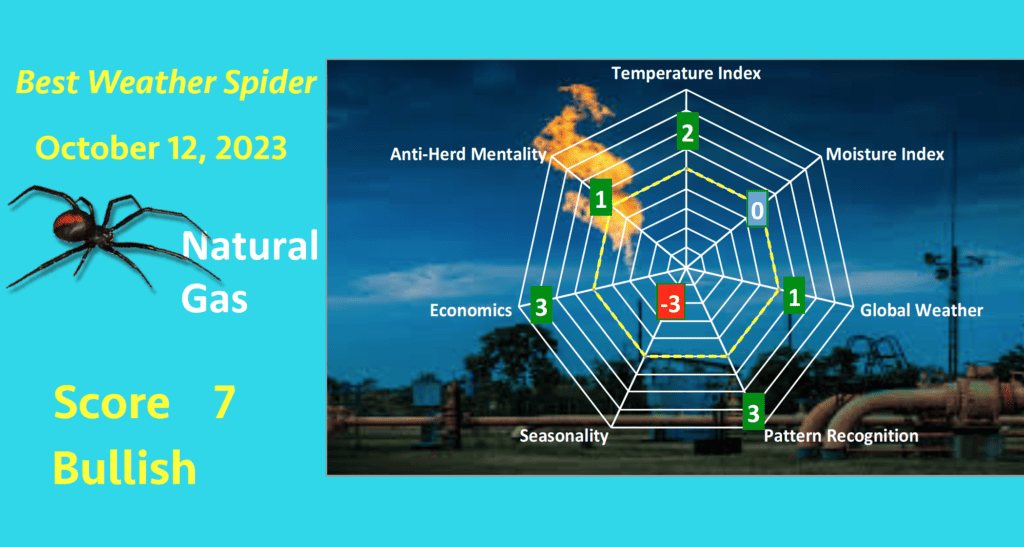
WEATHERWEALTH TRADE IDEAS
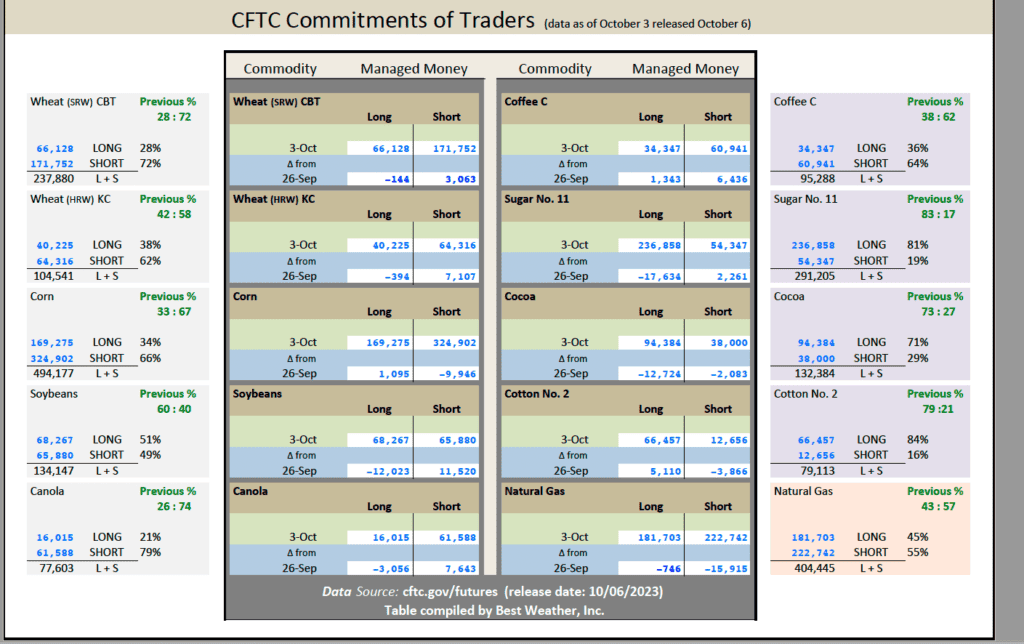
The COT is heavily long sugar and cocoa, but sugar prices continue to rally on global tightness, while cocoa succumbs to West African harvest pressure and bearish seasonal factors.
The biggest short position (wheat) would normally rally on strong seasonals this time of the year and crop problems in Argentina and Australia. So far, it has not been due to the stronger dollar and huge Russian exports.
Trade of the month?
In all honesty, for the time being, I do not have a high confidence weather-related trade in which my Spider would be at least a bullish >+7 or bearish <-7. It is a little late to sell soybeans in the hole now, but longer term I remain bearish this market.
My last trades of the month in September were selling soybeans or soybean call options and buying coffee, which had only a one-week trade on hot Brazil weather last month and a potential early bloom. These two trades were successful. I have been wrong about wheat bottoming.
If it was not for the stronger dollar, and worries about more Russian grain exports to raise money, wheat would be a high confidence buy, due to global weather issues.
It is possible that cocoa will become a high confidence buy again, once the bearish seasonal ends later this month. Out of all the AGS, I like this the best from the bullish side (again, no ETF/ETN for this anymore).
My suggestion is to be patient given the terrible situation with wars in Gaza and Ukraine and wait till I see the next big opportunity as we head toward winter.
CORN & SOYBEANS—Harvest pressure and a stronger dollar continue to hurt prices. Longer term El Niño bear market is still likely.
I was bearish corn all summer and most recently bearish soybeans in September. While I have a longer-term bearish attitude due to El Niño and present harvest pressure and the global dollar, I have no new advice at this time.
Unfortunately, a couple of weeks ago, I advised exiting any short soybean futures or short call options a bit too early because of my concerns about a possible bullish October or November USDA crop report. If so, I do not see the market rallying very far
WHEAT—Tries to rally each time on new global weather concerns, but fails due to Russian exports and the stronger dollar
Trying to fight a bear market on global weather problems in Australia and Argentina has been impossible due to weak demand, Russian exports, and the stronger dollar. We need to close above here, in which prices would be a potential buy risking the recent lows in prices.
I did advise wheat farmers two to three weeks ago to hedge some of their 2024 wheat production due to El Niño and potential big northern Hemisphere crops in the spring and summer of 2024
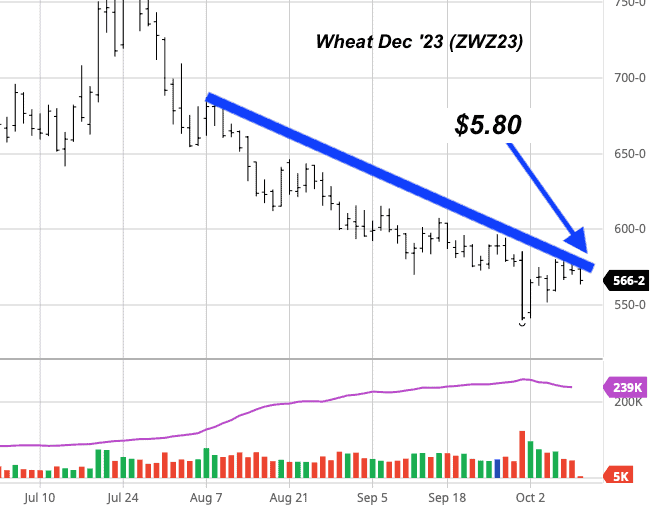
NATURAL GAS: Rallies on pre-winter buying, cooler October weather, and lower rig counts. Possible cold November and warm December if El Niño strengthens
Seasonally, natural gas prices have gone lower in 15 straight years this time of the year. However, most of these bear markets were due to a warm October in the United States. The colder mid-late October is an outlier. Remember, we are trading at very cheap prices relative to where natural gas prices usually are ahead of winter.
If El Niño becomes stronger and GLAAM is either negative or positive and given the positive Indian Dipole, a warm December would be the rule and offer a sell in this market in a few weeks.
On the other hand, if El Niño is weak and the MEI index stays below 0.8, a much colder winter would set this market on fire. Right now, again, I am leaning toward a cold November and a warm December.
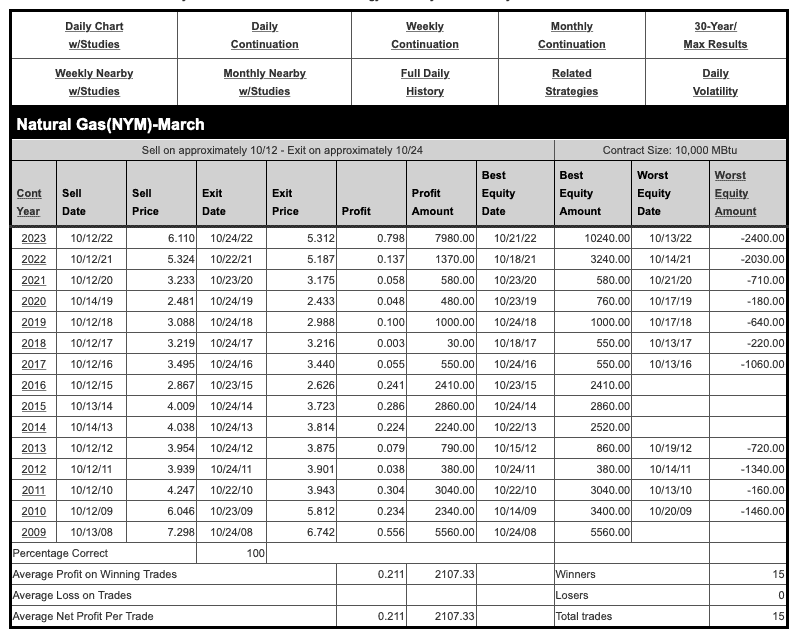
COCOA: Seasonal bearish factors due to hedge fund selling vs more wet weather problems for West Africa
Stopped out of long December cocoa last week with a break-even trade at 3390 given the bearish seasonals and over-bought market this time of the year. Longer-term, long the March 3500-4100 call option spread. I see it being too wet in West Africa for the main crop harvest with potential disease issues versus new cherries for setting the mid-crop pods. I remain bullish on this market on breaks.
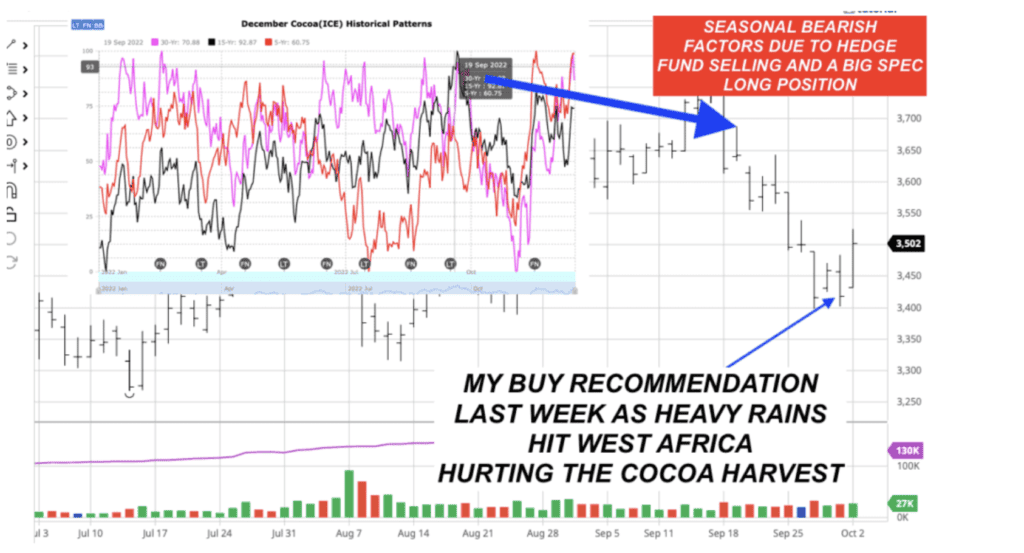
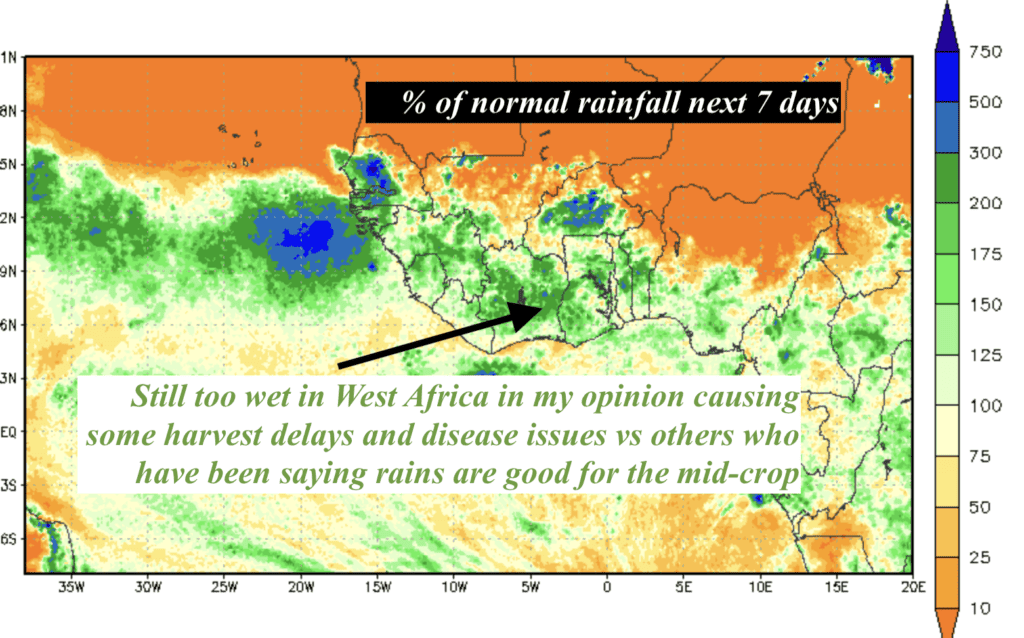
COFFEE: Short-term heat and dryness in Brazil, but not convinced yet it is a major issue for the crop
Long the March 2024 $1.55-$1.70 call option spread. Really a cheap shot with low risk. The U.S. dollar has to weaken, Brazil’s Real to rally, and there has to be a month of hot, dry Brazil weather to really set this market on fire.
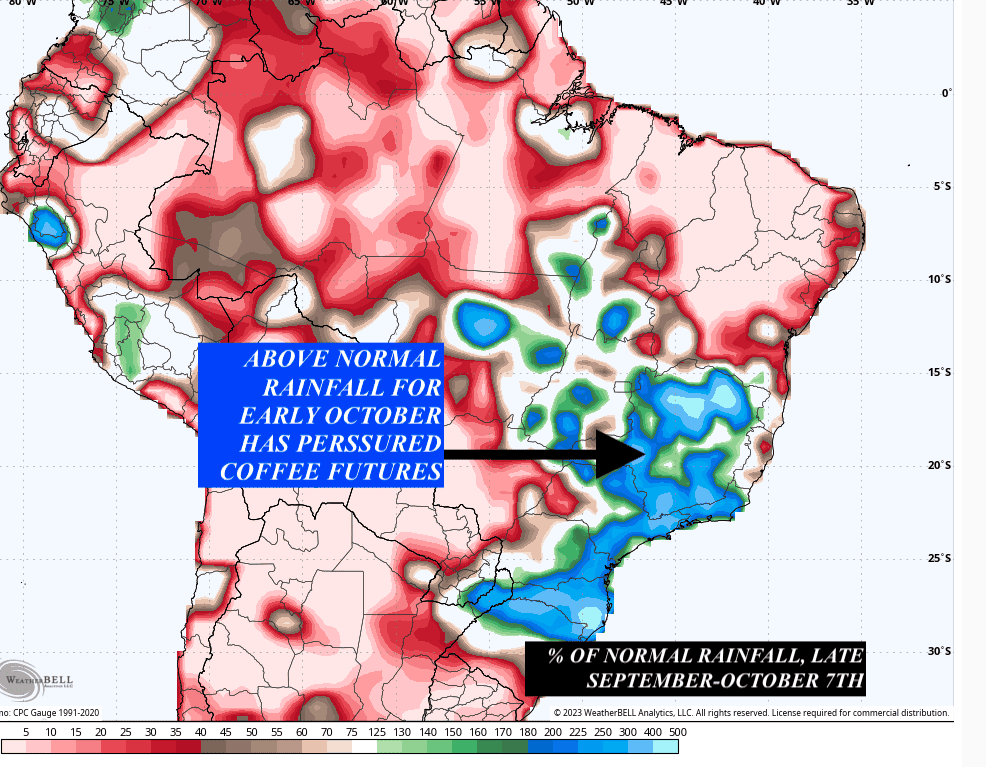
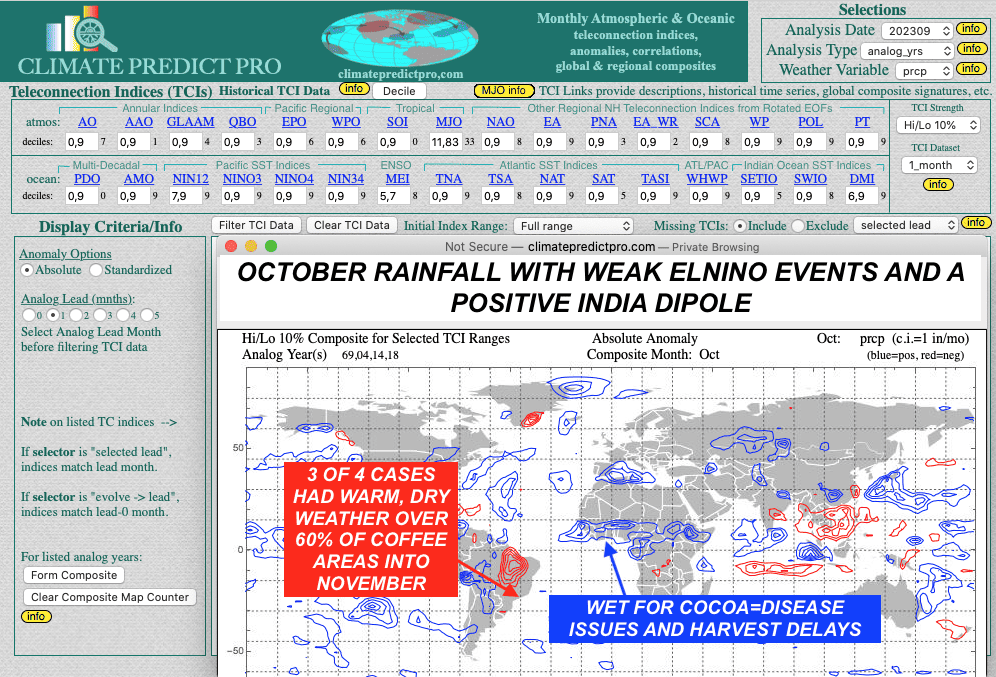
Currently, we have a weak to moderate El Niño, and here are the rainfall trends for the next few weeks.
SUGAR: Global deficit due to El Niño and strong seasonals still helping prices
The collapse in crude oil earlier last week initially resulted in a sell-off of about 5%-7% in prices. However, a strong seasonal to be long this market, combined with continued worries over the recent drought damage to Thailand and India’s crops has kept the bull market intact. While I was bullish earlier this summer on global weather problems, I did not predict the last 10% or so rally in prices since September.
When I can catch up with my research, I will have a detailed longer-range study about sugar production, price action, and El Niño for 2024.
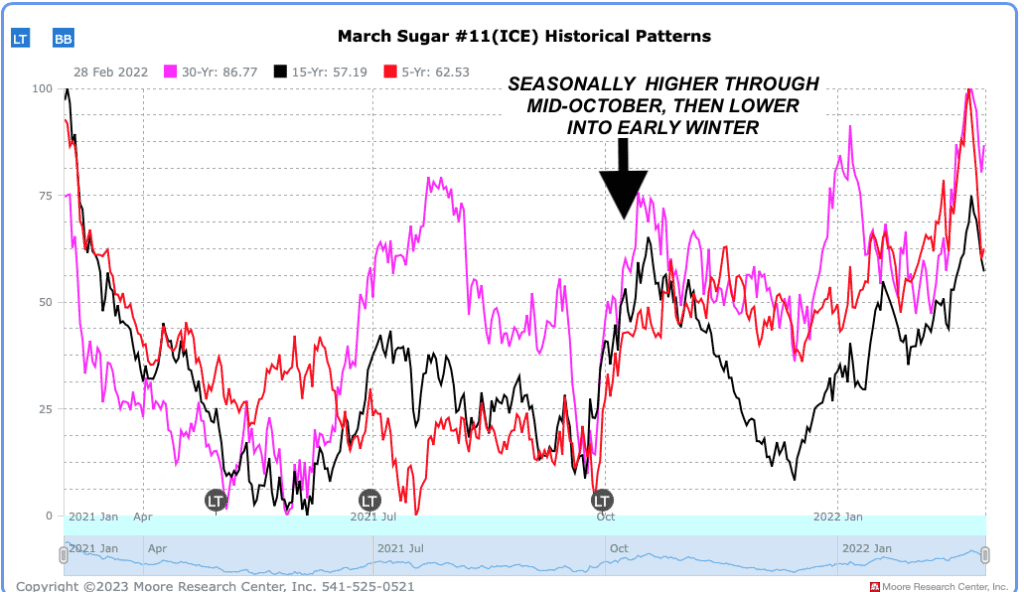
COTTON: The market has already absorbed the summer’s bullish weather and is now worried about demand and China
This market has tried to rally above 90 cents at least three times due to global weather crop issues and tight stocks. I was bullish on this market all summer long on crop problems in the U.S. and China. However, as mentioned, a slowdown in the Chinese economy and textile industry, plus poor demand and a stronger dollar is keeping this market volatile.
Traders may be below Dec. cotton from close to 2 months ago between 87-88 cents but will likely be stopped out at 86 cents.
Otherwise, longer-term and a conservative play, was buying the March 85-95 cent call option spread two to three months ago.

